One of SoMAS’ paramount objectives is to educate and train students to become the next generation of marine and atmospheric scientists, environmental resource managers, and citizens who possess a fundamental grasp of environmental issues and the choices that society faces in handling these issues.
Undergraduate
The first undergraduate degree offered through SoMAS was a minor in marine sciences established in 1988. In 1992, an Oceanography and Environmental Studies track was established in the Multidisciplinary Studies undergraduate degree program. Also in that year, the Marine Sciences Research Center (MSRC) offered its first undergraduate major, as the University’s Institute for Terrestrial and Planetary Atmospheres (ITPA) was transferred to MSRC, bringing with it the Atmospheric Sciences/Meteorology BS degree program. Over time, other undergraduate degree programs followed: a BA in Environmental Studies (2001) and a BS in Marine Biology and a BS in Marine Vertebrate Biology (both in 2005). The Environmental Studies major is designed for students anticipating a non-science career but one with a strong environmental bent, e.g., environmental journalism. The Marine Biology and Marine Vertebrate Biology degrees prepare students for a career in the sciences or environmental management. From May 1992 through December 2008, 174 students have graduated from SoMAS with an undergraduate degree.
Graduate
MSRC’s first graduate degree program, the Marine Environmental Studies Program (MESP), was authorized in April 1970 and produced its first graduate in May 1971. The MESP program was a Masters of Science program designed for practicing professionals and recent college graduates with varied academic backgrounds. Its curriculum offered a strongly interdisciplinary examination of the diverse factors affecting the marine environment and was designed to prepare students for careers in the then-rapidly expanding fields of coastal management, environmental monitoring and protection and resource management. During the 1975-76 academic year, MSRC conducted an internal review of the MESP program. As a result of this review, the program name was changed to “Marine Environmental Sciences Program” and the program’s focus was shifted more towards hard science, with somewhat less emphasis being given to management and specific environmental problem-solving.
In April 1978, the Board of Trustees of the New York State Education Department approved MSRC’s Ph.D. program in coastal oceanography. The following September, the program was approved by New York Governor Hugh Carey. The Ph.D. program graduated its first two students in December, 1981.
In 2007, as MSRC was renamed the School of Marine and Atmospheric Sciences, our graduate programs were re-titled to more properly reflect the unified educational experience within the school that is offered to both marine and atmospheric science students. At present, SoMAS offers both MS and Ph.D. degrees in Marine and Atmospheric Sciences, with concentrations in either the marine or atmospheric sciences.
Since 1971, SoMAS graduate programs have produced 697 graduates; 574 received a MS degree, 184 received a Ph.D. and 61 received both degrees. The alumni profiles below highlight a few of our graduates.
Andrew Glinsky (MA, 2019)
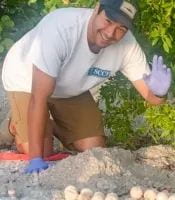 After graduating from the Marine Conservation and Policy (MCP) program at SoMAS in 2019, Andrew Glinsky secured a role as a Research Associate with the Sanibel-Captiva Conservation Foundation (SCCF), where he works to monitor and research sea turtle activities in Sanibel-Captiva, Florida. While enrolled in the MCP program, Andrew interned with SCCF as a sea turtle tagging technician where he helped to supervise the nighttime tagging program and assisted with multiple research projects.
After graduating from the Marine Conservation and Policy (MCP) program at SoMAS in 2019, Andrew Glinsky secured a role as a Research Associate with the Sanibel-Captiva Conservation Foundation (SCCF), where he works to monitor and research sea turtle activities in Sanibel-Captiva, Florida. While enrolled in the MCP program, Andrew interned with SCCF as a sea turtle tagging technician where he helped to supervise the nighttime tagging program and assisted with multiple research projects.
Andrew is from upstate New York and graduated from Towson University in 2014 with a B.S. in Environmental Science. Over the last six years, he has been a research assistant for sea turtle programs in Costa Rica, West Africa, the Caribbean, and the United States. While abroad he was fortunate enough to work with multiple species of sea turtles, assist in predator deterrent projects, and help conduct a variety of biological surveys monitoring primates, small mammals, and reptiles.

Shannon Davis (MA, 2017)
 Shannon Davis is currently working as an Aquaculture Welfare Specialist with the Global Animal Partnership (G.A.P.). G.A.P. is a science-based animal welfare certification and labeling organization that promotes ethical animal farming practices. Shannon’s current role focuses on fish welfare, work that is based on the principle that fish are sentient and have the capacity to suffer. Shannon is currently spearheading the aquaculture welfare program at GAP where she is building groundbreaking standards and regulations for ethical aquaculture practices. As Shannon is the first person to work within the realm of fish welfare at G.A.P., her co-workers playfully describe her as the resident “fish person” at the organization, a title any MCP graduate would wear proudly. Shannon’s work with G.A.P. is at the forefront of an emerging movement in fish welfare.
Shannon Davis is currently working as an Aquaculture Welfare Specialist with the Global Animal Partnership (G.A.P.). G.A.P. is a science-based animal welfare certification and labeling organization that promotes ethical animal farming practices. Shannon’s current role focuses on fish welfare, work that is based on the principle that fish are sentient and have the capacity to suffer. Shannon is currently spearheading the aquaculture welfare program at GAP where she is building groundbreaking standards and regulations for ethical aquaculture practices. As Shannon is the first person to work within the realm of fish welfare at G.A.P., her co-workers playfully describe her as the resident “fish person” at the organization, a title any MCP graduate would wear proudly. Shannon’s work with G.A.P. is at the forefront of an emerging movement in fish welfare.
Shannon Davis came to the Marine Conservation and Policy program with a BFA in Dramatic Writing from Purchase College and a passion for fish and sustainable fisheries. She chose the MCP program for its unique marriage of science, policy, and communications, which would allow her to pursue both her passions: writing and sustainable fisheries. While attending the MCP Program, Shannon worked for Cornell Cooperative Extension (CCE) and with the Peconic Estuary Program, restocking local bays with shellfish to improve water quality. She also interned at New York Sea Grant, researching sustainable fisheries on Long Island. After graduation,Shannon interned for a year with FishWise, a Santa Cruz organization dedicated to promoting sustainable seafood standards before starting her current role at GAP.
Gina Greer (MA, 2019)
 Shortly after graduating from the Marine Conservation and Policy program at SoMAS, Gina Greer was appointed Executive Director of the International Association of Antarctica Tour Operators (IAATO), a member organization founded in 1991 to advocate for and promote the practice of safe and environmentally responsible private sector travel to the Antarctic. In this role, she supports IAATO’s current guidelines and works to develop better ways to manage tourism to the Antarctic peninsula. With 20 years of past accounting experience under her belt as well as the skills she gained through the MCP program, Gina brings a unique and valuable perspective to this role.
Shortly after graduating from the Marine Conservation and Policy program at SoMAS, Gina Greer was appointed Executive Director of the International Association of Antarctica Tour Operators (IAATO), a member organization founded in 1991 to advocate for and promote the practice of safe and environmentally responsible private sector travel to the Antarctic. In this role, she supports IAATO’s current guidelines and works to develop better ways to manage tourism to the Antarctic peninsula. With 20 years of past accounting experience under her belt as well as the skills she gained through the MCP program, Gina brings a unique and valuable perspective to this role.
Gina first realized her love for marine conservation through expeditions to the Arctic circle and Antarctica, where she encountered breath-taking landscapes and charismatic marine mammals. While attending the MCP program Gina completed a capstone project with Gotham Whale, a small NGO that focuses on whale watching and research. Through this project, she was able to foster another one of her passions – photography, which she used to gather humpback whale fluke identification data. In addition, she also acted as a naturalist and educator on board the whale watching vessel.
When she’s not supporting safe and environmentally responsible practices south of 60 degrees, or practicing photography, Gina continues to work as a research associate with Gotham Whale and volunteers at the Atlantic Marine Conservation Society.
Rachel Coccia (MA, 2017)
Rachael comes from an interdisciplinary background with a focus on communications. She was the Host and Associate Producer of the nationally syndicated children’s show, Aqua Kids, for two seasons while earning a Bachelor of Science in Public Relations at Fredonia State University. This experience led her to pursue a Master’s in Marine Conservation and Policy at Stony Brook University where she worked at the Alan Alda Center for Communicating Science and completed her capstone with Surfrider’s Eastern Long Island Chapter. Upon graduation, she joined The Ocean Project as the Director of Youth Initiatives where she managed the World Oceans Day Youth Advisory Council and collaborated with other global youth empowerment programs.
In 2020, Rachel was the Plastic Pollution Manager at Surfrider, directing the nationwide Ocean Friendly Restaurants and Beach Cleanup programs. She also led the Rise Above Plastics program which included conducting public outreach and education efforts around the impacts of plastic in marine environments with the goal of helping others make the transition from a single-use, disposable lifestyle to one that is reusable and zero waste. As a Northeast native, Rachel used this position to seek solutions to plastic pollution that have a positive and lasting impact from coast to coast.
Wayne Penello ’79 Talks Risk Management
From Wayne Penello ’79 Talks Risk Management on Stony Brook Matters, by Kristen Brennan, on November 18, 2020.
Wayne Penello ’79 is not afraid to take risks. In fact, he’s built a career out of it.
As president and founder of Risked Revenue Energy Associates, Penello helps companies understand the importance of risk management. Now, he’s sharing his 40 years of experience in Risk is an Asset — a book he penned alongside his colleague Andrew Furman that has been published by Forbes Books.
But Penello wasn’t always in risk management. With a master’s degree in Marine Sciences from Stony Brook University, he began his career as a research scientist. Somewhat unexpectedly, Penello told us, it’s his research training and his experience at Stony Brook — that led to his success in business. Penello even dedicated his book to his professors at Stony Brook, acknowledging their role in his career.
Tell us more about your journey from Stony Brook University to your role as president of Risked Revenue Energy Associates and now author?
As a businessperson specializing in commodity price risk management, I’ve had the privilege of working on a vast range of complex problems. The education I received at SBU helped me develop a foundation of skills that eventually led to my understanding of statistics and chaotic systems.
My late advisor, Bud Brinkhuis, was a researcher and professor who made every effort to broaden my analytical and communication skills. His influence and support gave me the confidence to approach and obtain the training I needed from several other excellent scientists, both on campus and elsewhere. As a graduate student, I conducted experiments and studied at Cornell’s Veterinary College, Woods Hole Oceanographic Institute, Brookhaven National Laboratory and Stony Brook’s medical school. I also was part of a research team of marine scientists that took samples across the Caribbean Sea. Bud was my advocate through everything. The breadth of experiences offered by Bud and the other scientists and the access each of them afforded to me played an important role in opening my eyes to my own potential and accelerating my growth.
It sounds like your experience as a student had a profound impact on your career. Can you tell us more about that?
While I was a student, something magical happened. I took a statistics course that was then called Biometry, which introduced me to Analysis of Variance. At the time, it was a relatively new statistical tool and had only just become popular because computing costs had come way down. This course was my epiphany. I loved the course.
Back then, most students would sit for hours at the Computer Center punching cards that would program the computer to solve their homework problems. My challenge was that the Marine Science Research Center was on the South Campus, and the Computer Center was on the Main Campus. The bus ride between the two could easily take 45 minutes each way. I needed a more efficient way to get my work done.
Using my Texas Instrument TI-100, a hand-held calculator with 99 programmable steps, I broke the programs for each statistical test into a series of subroutines, each small enough to fit on the calculator. This allowed me to solve these problems in my South Campus office, saving me a lot of time. More importantly, by delving deeply into the math for analysis of variances, I developed an appreciation for the logic behind the tool. I was so excited about my new knowledge that even before the course was over, I started looking for ways to apply my new skills everywhere. I was fortunate to publish research papers with several scientists and professors who used these tools to further their research. These collaborations gave me the confidence to look beyond the opportunities at Marine Sciences.
What inspired you to take the leap and write Risk is an Asset?
I want businesses subject to commodity price risk to become resilient by maintaining appropriate levels of protection. When a company fails, it affects many people. Investors lose money, but employees lose their jobs and sometimes their retirement savings. My hope is that if managers have a better understanding of their risk, they will appreciate the benefits of process risk management and adopt it. Rather than focusing on math, my book explains its application and the utility of risking budgetary performance estimates. I wrote the book in a way that makes it approachable for students, in the hope that they will read and learn from it. These students will be the next generation of business leaders; hopefully, this book will help them prepare for many challenges.
With your degree in marine sciences, you began your career as a research scientist. How does this factor into the work you do today?
One of the great dangers in today’s world is that disinformation is continually being circulated and re-circulated. One publisher will print a knowingly false statement, only to retract it the next day. Unfortunately, before that happens, other news publishers will regurgitate that information as if it were true. This creates a long trail of referenced information that is wrong. Today, we must all challenge and check facts. My training as a research scientist helped me develop into a critical thinker and prepared me for today’s challenge of sifting through multiple and independent sources of information to find the data I can trust.
What advice would you give to students looking to follow in your footsteps?
If you’d like to make a lot of money, solve BIG problems. The bigger the problems you solve, the more likely you are to get paid well. But you also need to be good at solving these problems, so pick something that interests you. I have been fortunate to have loved going to work every day of my life. That allowed me to live a life filled with passion. If you can, make your avocation your vocation. Then you will love your work and have a good chance to become great at it. If there is someone out there who is doing the things you are interested in and good at it, go work for them. Surround yourself with excellence if you want to become an expert. As they say here in Texas, the fruit never falls far from the tree.
So, what’s next for you?
My current focus is to develop a suite of tools that individual investors can use to manage their investments more wisely. The challenge is to make these simple enough for everyone to use yet powerful enough to give them confidence that they will be better off if they proactively manage their investment portfolios.
Andrew Carter (MA, 2012)
Andrew Carter works on wildlife conservation policy at the Center for Conservation Innovation (CCI) at Defenders of Wildlife, where he researches and analyzes conservation governance strategies and emerging policy issues, and works with other CCI members to develop innovative approaches to habitat and species protection. He has held this position for over a year.
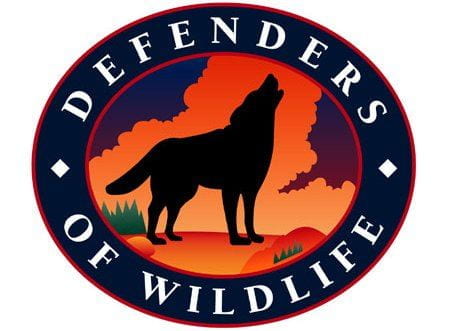 Before joining CCI, Andrew was Research Director at Miami Waterkeeper, an environmental non-profit focused on water quality, habitat protection, and climate change resilience in South Florida, taught graduate environmental law and policy courses at the University of Miami, and practiced law in New York and Florida. Before receiving his M.A. in Marine Conservation and Policy (MCP) from Stony Brook University, Andrew got his J.D. from the University of Miami School of Law. After graduation from the MCP program he went on to get a Ph.D. in Environmental Science and Policy from the University of Miami. Andrew’s capstone project for the MCP program examined the impacts of fracking on marine ecosystems, which he states “helped set the stage for later PhD work.” Andrew notes that the highlights of the program were the field courses, which allowed him to broaden his horizons with hands-on experience, and encourages current and prospective students to “be open and flexible to what you study and work in and take advantage of the variety of courses offered by SoMAS.”
Before joining CCI, Andrew was Research Director at Miami Waterkeeper, an environmental non-profit focused on water quality, habitat protection, and climate change resilience in South Florida, taught graduate environmental law and policy courses at the University of Miami, and practiced law in New York and Florida. Before receiving his M.A. in Marine Conservation and Policy (MCP) from Stony Brook University, Andrew got his J.D. from the University of Miami School of Law. After graduation from the MCP program he went on to get a Ph.D. in Environmental Science and Policy from the University of Miami. Andrew’s capstone project for the MCP program examined the impacts of fracking on marine ecosystems, which he states “helped set the stage for later PhD work.” Andrew notes that the highlights of the program were the field courses, which allowed him to broaden his horizons with hands-on experience, and encourages current and prospective students to “be open and flexible to what you study and work in and take advantage of the variety of courses offered by SoMAS.”
Geospatial Science Aficionado Alina Lance Follows 2013 AE Champ Olivia Mintun’s Path
From Geospatial Science Aficionado Alina Lance Follows 2013 AE Champ Olivia Mintun’s Path by Adam Rubin on Stony Brook Athletics
STONY BROOK, N.Y. — Olivia Mintun led the Stony Brook softball team in batting average during the 2013 America East Tournament as the Seawolves twice defeated top-seeded UAlbany to earn the league’s postseason title and an NCAA Tournament berth.
Mintun’s pride in her alma mater has continued to aid Stony Brook even after her graduation.
Mintun works as an admissions representative at Lake Land College, where she also had been an NJCAA and NFCA Academic All-American before enrolling at Stony Brook as a junior. And Mintun frequently works out wearing Stony Brook softball apparel while in the training facility primarily utilized by the Mattoon, Ill., junior college’s student-athletes.
The Seawolves gear inevitably would generate curiosity among the student-athletes at the Midwest school.
“We were all like, ‘Stony Brook? Olivia, where is Stony Brook?'” Alina Lance recalled. “And she would tell us about it.”
Coincidentally, during Lance’s sophomore year at Lake Land, Stony Brook’s softball staff reached out to recruit her to come to Long Island.
Lance immediately recalled that Mintun frequently would wear the university’s gear and was an alum. So Lance sought out Mintun.
“She told me all about it and was super-excited,” Lance recalled. “When I signed, she sent me a long text message of all the stuff I should know and what I should do when I get out here. She was a huge help and a big part of me going to Stony Brook, because she told me so much about the school.”
Said Mintun: “When Alina approached me I was ecstatic about the possibility of the Lake Land-Stony Brook legacy continuing. Central Illinois is extremely different from Long Island as well as being one heck of a drive. When Alina decided to commit to the Seawolves, it was exciting to see what another Lake Land College student-athlete could accomplish.”
Fast forward and Lance herself has graduated from Stony Brook, having earned a technological systems management degree from the College of Engineering and Applied Sciences with a geospatial science minor from the School of Marine and Atmospheric Sciences in May.
Lance, a righty-hitting outfielder, is back for the 2021 season as a graduate student after being deprived of the bulk of her senior season due to coronavirus.
Her time at Lakeland was instrumental academically as well as with softball.
There, she was exposed to a geospatial science class and was hooked by the subject.
“You pull data from satellites and you basically analyze it through maps,” Lance said. “So with COVID, for example, you can pinpoint where the hotspots are and relay the data in a better manner to other people.”
Her junior-college geospatial science professor was passionate about Ohio Valley Conference basketball, especially with league member Eastern Illinois University right down the road from their school.
Lance, who grew up 2½ hours south in New Athens, Ill., worked on a project that plotted the recruiting of OVC men’s basketball coaches — using five years of data.
“You could actually see where each of the coaches liked to recruit from,” Lance said. “It was interesting to look at. It made me realize that you could use geospatial for more than just healthcare or national defense. You can use it for just about anything.”
Of course, geospatial science has more consequential applications than mapping basketball recruiting regions. And Lance has her eyes set on working for the U.S. government in national security, ideally at a $1.7 billion National Geospatial-Intelligence Agency campus currently in development in St. Louis. The NGA is part of the Department of Defense.
Otherwise, Lance will aim for a private-sector position in data analysis.
Her hometown is less than an hour from St. Louis.
As evidenced by her excitement to come to Long Island to complete college, though, she is open to working anywhere in the country.
“I’m not a homebody type of person,” Lance said.
SoMAS Alum Celebrates Release of First Book
Laurie Zaleski has found a way to communicate her science to new audiences and published her first book. A graduate from the lab of Dr. Roger Flood, she earned her M.S. degree from the Marine Sciences Research Center (now SoMAS) at Stony Brook University in 2002.
A Young Person’s Field Guide to Finding Lost Shipwrecks is Laurie’s autobiographical account of an actual nautical archaeological expedition. The book is written from the surveyor’s point of view and explains the math and science behind multibeam sonars and how to use the technology to find shipwreck. Along the way she describes the equipment used to explore the seafloor. The reader is taken through a typical day at sea on a marine research vessel equipped with a multibeam sonar and ROV (Remotely Operated Vehicle) on a real-life expedition in search of a shipwreck. The story begins alongside a dock in Cadiz, Spain with a team that includes Laurie, three archaeologists, two college students on a summer internship, three captains, one cook, one engineer, two SCUBA divers and one able-bodied seaman onboard the Hercules, a 37 meter research vessel and are in the midst of getting ready to set sail in search of the Santisima.
Readers will learn a lot more than science in this true-life account of a scientific expedition. They will learn history, eat tapas, and dance the flamenco all while in search of a 300-year-old shipwreck. Introducing Multibeam and Acoustic Reflectivity to children – What could be better? And women scientists! Yeah!
She says she wrote A Young Person’s Field Guide to Finding Lost Shipwrecks “because of my love of science,” and “moreover my love of my 12-year-old granddaughter and the essential need for all children, especially girls, to keep their sense of adventure firmly intact as well as to find a connection to themselves through math and science.”
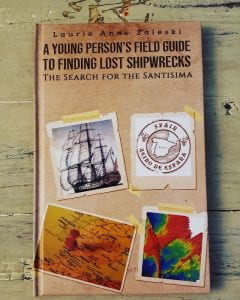 Thanks to her time at SoMAS launching her into her career, Laurie has been fortunate to have travelled the world–from the Arctic Circle to Saipan and all points in between conducting geophysical surveys. She has mapped thousands of kilometers by plane, boat and foot. She fondly remembers her time at Stony Brook as a turning point in her life. She had donated a copy of the book to SoMAS as a way to inspire the next generation of brilliant young oceanographers!
Thanks to her time at SoMAS launching her into her career, Laurie has been fortunate to have travelled the world–from the Arctic Circle to Saipan and all points in between conducting geophysical surveys. She has mapped thousands of kilometers by plane, boat and foot. She fondly remembers her time at Stony Brook as a turning point in her life. She had donated a copy of the book to SoMAS as a way to inspire the next generation of brilliant young oceanographers!
The book is available on Amazon in Kindle and Hardcover.
Zaleski, L.A. (2020). A Young Person’s Field Guide to Finding Lost Shipwrecks: The Search for the Santisima. Austin Macauley Publishers.
SoMAS MCP Program Prepares Grad for Influencer Role
Photo above: Alan Alda, center, with Rachael Coccia, left, and her graduate advisor Kate Fullam.
From Master’s Program Prepares Grad for Influencer Role by Glenn Jochum on Stony Brook University News, May 27, 2020.
Helping to clear our shores of unsightly and dangerous plastics is both a mission and a great job for Rachael Coccia ’17, who earned a master’s degree in the Marine Conservation and Policy (MCP) program at the School of Marine and Atmospheric Sciences (SoMAS).
“I was looking for a unique program that would allow me to specialize in communicating about marine conservation topics to bridge the gap among scientists, policymakers and the public,” Coccia said. “The one-year program offered that flexibility.”
Coccia, a resident of San Diego, California, described her time at Stony Brook as “pivotal,” helping her get to where she is today: plastic pollution manager at the Surfrider Foundation, a nonprofit environmental organization that works to protect the world’s oceans and beaches.
In her position, Coccia directs the nationwide Ocean Friendly Restaurants and Beach Cleanup programs from the foundation’s headquarters in San Clemente, California.
Coccia credits her time working as a graduate assistant at the University’s Alan Alda Center for Communicating Science for the development of important skills that she would use in her career.
While there she managed The Flame Challenge, an international competition that challenges scientists to explain complex science concepts in ways that are understandable to an 11-year-old. In that role, she reviewed hundreds of entries from scientists explaining energy to kids.
“Having the chance to work alongside Alan Alda was incredible,” said Coccia. “He’s very involved with the Center and in particular, The Flame Challenge.”
She also enjoyed several courses offered at the Alda Center, including Improv for Scientists.
“This class was very eye-opening as I watched scientists from many different disciplines come together to explore their science and learn techniques to better communicate about what they do,” she said.
Another highlight: taking a video production class at the Alda Center in which she documented a trawl survey and developed a video featuring the work of the Shinnecock Bay Restoration Program.
“We pulled up some incredible specimens, including some adorable puffer fish,” she said.
Coccia’s knowledge of things pelagic came easily to her, even though she grew up in landlocked Rochester, New York. That’s because she was always enamored of the outdoors, spending hours running through the woods and playing in a creek. Later on, she became a lifeguard and competed on her high school’s swim team, earning her the nickname “Fish.”
Her most cherished outings, however, were to the beaches of the East Coast. “I would play in the water for hours on end, search for critters under the rocks and dive down to the ocean floor to enjoy the relative peace beneath the waves,” she recalled.
It was through the MCP program that Coccia connected with the Eastern Long Island chapter of Surfrider.
“That introduced me to the Ocean Friendly Restaurants program,” she said. “I was able to visit restaurants to discuss the program with them, learn of the obstacles they would face and come up with solutions.”
That experience proved vital to her current role as the program’s national director.
The path to Surfrider was a circuitous one, but a bit of luck mixed with persistence landed her a dream job.
Coccia first applied for the position of plastic pollution manager soon after graduating from Stony Brook. She made it to the final round in the interview process but ultimately did not get the job because there were more qualified applicants, she was told.
“It’s a very competitive field to find jobs in because these are the jobs that will ultimately save our planet,” Coccia explained.
So she interviewed for a number of related positions online before changing her approach and getting the experience she needed.
Her new strategy was to set up face-to-face chats with local organizations, which led to her taking a part-time position with The Ocean Project, the global coordinator for World Oceans Day. A full-time position became available in 2018.
As the director of youth initiatives overseeing the World Oceans Day Youth Advisory Council, Coccia was able to work remotely before moving across the country to San Diego. Nearly a year after she moved, she saw another posting for the plastic pollution manager position at Surfrider. She interviewed for it this time in person — and landed the job.
Before she enrolled at Stony Brook, Coccia earned a bachelor’s degree in public relations at Fredonia State University, and hosted an associate-produced 40 episodes of the Aqua Kids TV Series, an Emmy award-winning K–12 program that educates young people about ecology, wildlife, science and how it relates to them.
That experience reinforced her commitment to communicating about the crisis caused by plastic pollution — and the outrage she felt learning about the mistreatment of the ocean. The images of marine life tangled in plastic seared into her brain during an undergraduate environmental science class.
Today, she consults with the inaugural Surfrider Club Leadership Council to encourage more involvement and integration with its 100-plus student clubs across the nation.
“The solutions already exist — it’s just a matter of scaling them up and implementing them on a larger scale,” Coccia said.
She said there are approximately 630 Ocean Friendly Restaurants across the country that have committed to using reusables only for on-site dining, avoiding plastic bags and straws, and instituting other plastic-free policies.
Coccia said some people avoid single-use plastics by arming themselves with reusable alternatives, from cups and bags to straws and containers. For those looking to remove all single-use plastics from their lives, there are DIY hackathons that offer instruction on how to make soap, toothpaste, cleaners and more in reusable containers.
“The problem is that it shouldn’t be up to individuals. The plastics industry and larger corporations that profit from plastic put us in this mess, and they should be held responsible to help us out,” Coccia said. “When we can hold them accountable through policies like extended producer responsibility, that’s when we’ll truly be able to leave our toxic addiction to plastic in the past.”
#SeawolvesForLife
Melissa Scheiber (BA, 2015) Connects People With the Natural World
From Melissa Scheiber ’15 Connects People With the Natural World by Glenn Jochum on Stony Brook University News, May 12, 2020
As a child growing up in the hamlet of Bay Shore, Long Island, which adjoins the Great South Bay, Melissa Scheiber ’15 didn’t have to travel far to enjoy the natural world. Indeed, the environmental humanities major recalled many happy days going for nature walks on the shore and on school trips for cleanups.
The young nature lover also enjoyed visits to local parks to see bat houses and their fascinating occupants.
“I’ve always loved wildlife, and that started with my parents and grandparents taking me places to see animals. It’s so important to get kids interested at a young age,” Scheiber said.
But it was family vacations to Florida that really stoked her interest in the environment.
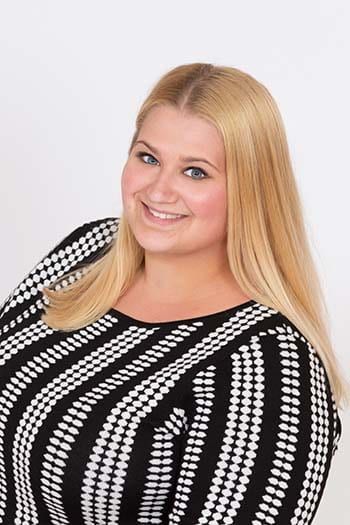 “We used to go to zoos, aquariums and rescue sites, and hang out at the shore and watch the manatees,” she said.
“We used to go to zoos, aquariums and rescue sites, and hang out at the shore and watch the manatees,” she said.
Another influence for the young science lover was former Vice President and environmental activist Al Gore.
“It was the movie An Inconvenient Truth that really solidified the path I wanted to take with my life,” she said.
In 2016, Scheiber worked as the conservation coordinator for the Strategy and Planning Department at the Wildlife Habitat Council (WHC) in Silver Spring, Maryland. Earlier this year, she was promoted to events manager for the organization.
In that role, Scheiber helps develop and implement programs for WHC webinars, manages the technical aspects of online learning events and assists in implementing all details of the WHC’s annual Conservation Conference in Baltimore.
So how does a young woman make the leap from loving manatees to studying the humanities? Scheiber will tell you that it comes down to picking the right major — one that bridged her love of wildlife and communicated that passion to a larger audience.
“That is why the environmental humanities major is so important. Humanities folks shine when it comes to connecting with everyone in a way that speaks to their needs and their hearts, whether it’s with corporations or with kids and community volunteers,” Scheiber said. “When we are able to bring all these different types of people together, change happens.”
At Stony Brook, Scheiber explored many different topics in her major —among them, education, politics, art and data compilation.
“My major is all about connecting people to environmental causes, and my studies gave me an understanding of how to specifically do that,” she said.
David Taylor, who is one of Scheiber’s mentors, said his former student “always focused on the possibilities for humanities in the service of sustainability.”
“She saw how her background in environmental humanities could distinguish her in the unique skills she could bring to a job,” said Taylor, an assistant professor in the Sustainable Studies Program and director of the environmental humanities major in the School of Marine and Atmospheric Sciences.
Understanding how people form an emotional connection to the environment and the science behind environmental issues has helped Scheiber come up with topics and present them to people who don’t necessarily have a science background. She said this helps them to connect with issues and possibly inspire action.
During the past four years, Scheiber has traveled to Louisiana to teach students and teachers about the insects that inhabit their woodlands. She also has led beach cleanups in New Jersey, built bug “hotels” at several Fortune 500 companies and educated children about bats at the United States Botanic Garden in Washington D.C.
Obviously, events such as these cannot take place when people are quarantining all over the world.
“When the stay-at-home orders began, we quickly put together a kid-friendly webinar series for everyone stuck at home so they could learn about wildlife and still have fun doing activities,” she said.
Virtual meetings soon replaced in-person engagement, and the WHC team produced documents that outlined how to continue environmental projects while being unable to gather.
One thing was certain: Even a global pandemic could not prevent Scheiber from connecting people with crucial environmental issues.
“We saw a need and rose to the occasion,” she said.
Laura Klahre ’97 Defends Long Island’s Native Pollinators
Bee rancher Laura Klahre sits by her mason bee cottages at Blossom Meadow Farm in Southold. Photo by Randee Daddona
From Laura Klahre ’97 Defends Long Island’s Native Pollinators on Stony Brook Matters by Kristen Temkin Brennan
Laura Klahre ’97 speaks for the bees.
As a bee rancher and the owner of Blossom Meadow Farm on the North Fork of Long Island, no one understands the importance of pollinators more than Klahre. That’s why she works hard to educate the public on creating friendly environments for bees.
But not all bees are created equal. While recent headlines have drawn attention to honey bees, the School of Marine and Atmospheric Sciences alumna is working hard to shift attention to Long Island’s native pollinators, including mason bees and bumblebees, both of which pollinate two to three times better than the invasive honey bee.
As a School of Marine and Atmospheric Sciences graduate, you began your career as an oceanographer. What inspired your career change to bee rancher and berry farmer?
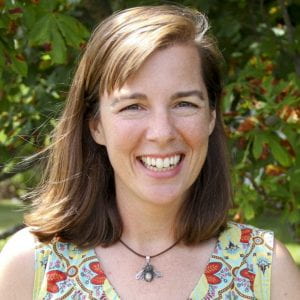 Life is definitely a meandering path but the leap from oceanography to farming is not as gigantic as one would think. Similar ecological principles for healthy ecosystems apply on land and underwater. For example, biodiversity is critical for a stable ecosystem when dealing with the fisheries in the Atlantic, the resiliency of a coral reef, and even for a self-sustaining farm. To this end, we maintain a tract of grassland and natural areas for native pollinators to live, follow organic growing principles, ensure multiple flower species are blooming throughout the growing season, turn off the lights at night (moths pollinate), and no longer keep honey bee hives.
Life is definitely a meandering path but the leap from oceanography to farming is not as gigantic as one would think. Similar ecological principles for healthy ecosystems apply on land and underwater. For example, biodiversity is critical for a stable ecosystem when dealing with the fisheries in the Atlantic, the resiliency of a coral reef, and even for a self-sustaining farm. To this end, we maintain a tract of grassland and natural areas for native pollinators to live, follow organic growing principles, ensure multiple flower species are blooming throughout the growing season, turn off the lights at night (moths pollinate), and no longer keep honey bee hives.
You’re currently working to ban honey bee hives from protected lands. Can you tell us more about why this is such an important initiative? How are honey bees impacting our ecosystem?
Declining honey bee populations have gripped the headlines and unfortunately spurred many land managers to allow hives on protected lands. Receiving a fraction of the media attention, native bee populations have been hit even harder and are ecologically more important. A multitude of papers have shown that honey bees outcompete native bees for food, change the ecosystem by preferentially pollinating invasive weeds, and can transmit pathogens and parasites to native bee species. Honey bee hives should be banned from parklands and open space in order to protect resident native bee populations and overall ecosystem health.
In a similar vein, sustainability programs should not teach beekeeping. In light of the most recent research findings, beekeeping should only be taught as part of an agricultural program. Honey bees should be seen as livestock and appropriate to pollinate large scale, single crop agriculture where pesticides are heavily relied upon, there is little to no natural habitat set aside and pollinator availability is a problem.
You mentioned the importance of learning about sustainability practices. How has Stony Brook prepared you for your work today?
Before my first day of graduate school, I had never been to Long Island. Yes, I grew up on the shore of New Jersey and had been to New York City several times, but never to Long Island. Once you find your groove, it is a fascinating place! Although close to an urban center, nature still abounds and the North Fork of eastern Long Island still has strong agricultural underpinnings. Sustainable agricultural practices are critical for nutritious crops, bountiful yields, and for a healthy environment.
My graduate years at Stony Brook University were hard, but the research and classes prepared me for this path forward. I love reading journal articles about native pollinators (Dr. John Ascher and Dr. Bryan Danforth are two of my favorites) and figuring out how to take the science and bring it into practice. For example, deformed and misshapen fruit likely results from a pollination problem. Native bees, like mason bees and bumblebees, pollinate 2-3 times better than the non-native invasive honey bee. Science has shown that more complete pollination of a flower results in heavier, higher quality fruit and thus a higher crop yield per acre. We started ranching mason bees on our farm years ago and now over 150 people have started with mason bees through us (one can sign up for our newsletter through blossommeadow.com). Although I kept honey bees since the late 1990’s, those hives are now gone.
Tell us more about your work at Blossom Meadow Farm.
We are a small farm in Southold, NY focused on growing premium berries, making great jam, and raising mason bees. We are particularly well known for our award-winning red raspberry and strawberry jams. We don’t use commercial pectin to make jam. Instead, the jam is thickened by allowing the fruit to slowly reduce, coaxing out the fruit’s vibrant flavors and natural pectin.
Our tagline is Eat Jam, Save Nature. Jam sales support the farm as well as our side conservation initiatives with monarch butterflies, nocturnal pollinators, and now carbon sequestration efforts by growing and planting oak trees.
What does a typical day look like for you?
My husband, Adam Suprenant, is a winemaker, and together we co-own the winery Coffee Pot Cellars (named for the Orient Point Lighthouse, which sailors call the “Coffee Pot”). Blossom Meadow Farm shares retail space with the Coffee Pot Cellars Tasting Room in Cutchogue. A typical day during the warm months entails picking fruit in my pajamas while listening to an audiobook. At 11 am, my black pug Beasley and I zoom down the road about three miles to open up the tasting room. We pour wine and talk conservation all day and then head back to the farm at 6 pm to pick more fruit until dark. We are closed on Tuesdays and Wednesdays so that I can make jam.
How about a typical day off?
With the farm in full production, there really is no day off but I love what we do. One of the clear benefits to living on Long Island though is that there is always a beach within bicycling distance to take a quick dip.
In your 2015 TED Talk, you spoke about the critical role that bees play in food production. What is one thing you wish everyone knew about native pollinators?
Planting bee-friendly plants adds color to your landscape AND helps reconnect Long Island’s fragmented natural areas to form larger more diverse ecosystems. Planting bee-friendly plants, shrubs, and trees creates a vibrant wildlife corridor for bees, butterflies, birds, and other creatures. Instead of driving somewhere to see nature, you can bring nature to your doorstep.
For more information on bee-friendly plants, Laura Klahre and Blossom Meadow Farm, please visit blossommeadow.com or follow them on Instagram and Facebook.
Learn more about how Stony Brook is building a bee-friendly campus.
Greg Marshall (PhD, 2019)
From For Greg Marshall ’88, an Emmy-Winning Career Started at SoMAS on Stony Brook News on May 30, 2019
Imagine being underwater and seeing a shark swimming nearby.
What would go through your mind? Fear? Wonder?
When Greg Marshall ’88 saw a shark in the water near him off the coast of Belize in 1986 — while doing research for his master’s in Marine Science at Stony Brook University’s School of Marine and Atmospheric Science (SoMAS) – he was struck by inspiration. That inspiration would lead to a career with National Geographic, two Emmy Awards, and, at Stony Brook’s 2019 Commencement, an honorary degree.
The inventor of the Crittercam, a non-invasive camera that allows researchers to record animal behavior in the wild, Marshall was presented with an honorary Doctor of Science at the Doctoral Hooding ceremony on May 23. Prior to the ceremony, he discussed Stony Brook’s influence on his career, his work with National Geographic, and his experience returning to campus as the Akira Okubo Visiting Scholar in 2017.
What does it mean to come back to Stony Brook to get an honorary degree?
As you can imagine, it’s amazing. I’m completely thrilled, and a bit overwhelmed. It’s such an incredible honor, and I suppose I think of it as the cherry on top of having an interesting career that started here 30 years or so ago. I didn’t go the academic route and pursue a PhD, but the fact that it’s come back to this is really a wonderful culmination of 30 years of hard work and a pretty fulfilling life.
Are you going to insist that anyone call you “Doctor?”
Of course! I’ve got my kids calling me “Doctor” already!
Actually, I’m a pretty casual guy, so I’m not going to insist on anything, but it would be a very nice little treat.
You mentioned that your career started here. Take us back 30 years or so. What brought you here?
I’d finished my undergraduate degree in 1981 at Georgetown, and I had thought I’d go to law school. I was prepared to go to law school — I was interested in international law — but I thought I’d take a couple of years to explore other things as well. I was interested in photography and journalism, so I moved to New York City and explored photojournalism. At the end of a year and a half, I decided, “Well, this probably isn’t for me, and I’m still not that interested in law school” — my dad’s a lawyer, so law school had always been part of the equation. But, I just wasn’t passionate about it, so I made a list of things that I was passionate about. No matter how I parsed that list, marine biology was on top. I thought, “I’m 28 years old. I’m young. Why not give it a shot?” So, I decided to find the closest marine science program that had a good reputation, and Stony Brook was at the top of that list. I came out the next day to talk to people, and brought my academic records with me. What I heard was, “You know, you’re well prepared for law school, but you’re not ready for marine science. You’ve got a lot of work to do to get into this graduate program.” They outlined what I needed to do: physics, chemistry, calculus, and all these things that I hadn’t focused on in college. I was told, “If you can do this, and do it well, then we’ll consider you.” The following year I spent here at Stony Brook doing those core undergraduate courses. When I finished I came back to the Marine Sciences dean and said, “Well, we talked a year ago, here’s my transcript for the things you told me I needed to do. Now, what do you say?” He looked at it, and said, “I told you this is what you needed to do, and you’ve done it, so welcome aboard.”
This was my passion, as it had been since I was a kid. It’s great that my brother came for the Doctoral Hooding ceremony, because it was really he and I together, out exploring in the ocean, snorkeling together, diving together that really nurtured the passion I have for the ocean. So, finally I was here, pursuing something that truly inspired me, and I remember this incredible feeling of satisfaction and completeness. I remember walking back from class one day feeling “This is where I should be. This is right.” It was a really fulfilling, complete feeling. As it turns out, the rest of my career happened by good fortune and some, of course, preparation to be lucky. I was fortunate to have learned some of the skills and background I needed to ultimately have a life changing encounter with a shark which opened my eyes to new research possibilities.
Let’s talk about the shark.
I was a student here, pursuing my master’s degree, but doing my actual physical research in Belize. I was diving for the research, and out there one day and had an encounter with a shark. I’d had others, but this one was a unique experience for two reasons. First, I’d just built an underwater camera for a film I’d decided to make about the research I was doing and the problem that I was trying to solve (at the time I was dealing with the demise of the queen conch populations in the Caribbean as a result of overfishing — and I made the film from the locals’ perspective about their overfishing of this critical resource). I didn’t have any money, so I had to build my own underwater camera which enabled me to make the film which generated money for marine conservation in Belize. So, the whole concept of filmmaking and conservation came together at that point in my history. So, I’d just built an underwater camera system, and it occurred to me the moment I saw a remora, a suckerfish, suckled onto the belly of the shark, “The camera that I’ve just built is about the same size as that remora, and if I streamline my camera, I wonder if we could ride along with the shark. The shark might not change its behavior, because it’s used to having a remora ride with it. We could learn amazing new things about sharks’ behavior and ecology.” That was the moment that my life changed course again. That was the start of the Crittercam. I thought, “Surely, someone’s done this,” but discovered that no one had, and I became passionate about trying to make it happen.
I came back to wrap up my degree here, write my papers, submit my thesis, and while doing that, I decided to see if National Geographic would be interested in my idea. I called them up, and they agreed to have me come by and talk. Well, they were gracious, saying “Yeah, interesting idea, but we don’t fund ideas that are quite this new and untested.” So, it took another five years of really intensive work on my own, with some little grants here and there — including one from Stony Brook — before I got my first grant from National Geographic in 1991. The next year, I secured another grant from Geographic, and they said, “This is interesting; you’re proving this thing.” Following that I starting contracting with them then joined the staff a year or so later. I was staff for the next 23 years in various capacities: I was a scientist/specialist, then executive producer, and ultimately vice president.
What was the first footage that you got that made you say, “Wow, I’ve really got something here?”
The very first footage was from that captive animal in Belize, a sea turtle. What was interesting about that was that the turtle behaved normally, and all the other animals in the pen with it behaved normally. It gave me confidence that this system had potential, because the animal itself didn’t behave differently, and the other animals it was interacting with didn’t behave differently, so it gave me the sense that there was real potential for doing good science.
Then in 1992 or 93, National Geographic decided to make a film about me and my early efforts, and they captured the moment on film of us seeing the first images from a wild, free-ranging animal in its natural habitat — a tiger shark. That moment was just spectacular. It was years of commitment, belief, and rejection and work, wrapped up in a moment where we finally see the world from from a wild, free-ranging animal perspective and I realize this is going to work. It was extraordinary.
If you go to drama school, you may think that maybe, one day, you’ll win an Emmy. You go to film school, maybe you think about winning an Emmy. You go to school for marine science, you don’t think about winning Emmy Awards. What did it mean for you to win those two Emmys?
It’s fun, obviously. You stand up there, they call your name, and you think, “Really?” There’s that moment, which is incredible.
In terms of the meaning, it’s bit more complicated. The award itself is fantastic. That part of it, to be recognized, contributing something unique and new in the film world, is terrific. I love it. But it became a bit of a professional challenge because the images are captivating and people in the media world began to think of this as media and not science. They would say, “These are cool images, and we should get more cool images for film.” Problem is, my primary objective is science and research.
I began to get calls from producers saying, “We’ve got to put cameras on the back of X, Y, and Z,” and I said, “Well, we could, but we’re working with animals and will only do so if there’s a good scientific rationale for it.” If we get great images that can be used in films and stories, fabulous, but our primary objective will always be science and research, and if that’s not the primary objective, I’m not interested.
Media and its impact in conservation are critical. My concern was the potential harassment of animals strictly for media ends, and that’s something I decided not to allow to happen. If it’s for research, and if interaction with animals is necessary in order to do the research, that’s a risk worth taking. Simply put, when we’re interacting with animals, there must be a level of additional ethical responsibility.
You came back to Stony Brook a couple of years ago as a visiting scholar. What are your perceptions of SoMAS today compared to what you saw as a student?
You guys have grown incredibly. The whole department (and university) is so much more diverse and robust than when I was here. That’s not to say that it wasn’t at that time; after all, the Marine Science program was considered one of the best coastal oceanography programs in the country. It’s been terrific to see the growth, the further investment, and the dedication to the fundamental principles of conservation and sustainability. It’s exciting, and important, and I’m thrilled to be a part of it.
Chris Crosby (BS, 2019)
From Chris Crosby ‘19 Aims to Leave the Planet Healthier Than He Found It on Stony Brook News by Glenn Jochum
Maybe it was going hunting and fishing with his grandmother. Or being glued to the Discovery Channel as a kid. Either way, Chris Crosby’s love of nature was too strong to ignore, and led him to enroll at Stony Brook University following a tour of duty with the United States Army.
Crosby ‘19 went to college right out of high school, but soon realized he was there for the wrong reasons.
“I mostly went because all of my friends were going and I didn’t know what else to do,” said the Oakham, Massachusetts native.
After nine months working in the family business, a machine shop, he joined the Army.
“I was trained as an interrogator and sent to Hawaii, where there was no one to interrogate,” said Crosby. That led to him performing an array of random jobs ranging from occasional Humvee mechanic to shelter construction to map builder.
Off-duty he tried his hand at SCUBA instead, which rekindled his passion for the natural world. At the end of his tour of duty in the Army, Crosby realized that he was ready to return to academia so he focused on searching for schools with reputable marine biology programs. Since he was also looking to head back home to the Northeastern U.S., Stony Brook proved to be a perfect fit.
After two semesters of basic biology he was ready to make the plunge into the School of Marine and Atmospheric Sciences at Stony Brook (SoMAS) core classes and focus entirely on marine life as a student in the Marine Vertebrate Biology program.
He cites Conservation Biology, taught by Liliana Davalos, as one of his favorite classes as Professor Davalos challenged the class to figure out on its own the issues that face the living world we inhabit and devise solutions.
Chris also credits Conservation of Seabirds, taught by Emily Runnells and Marine Ecology, taught by Jeff Levinton for helping shape his academic interests, specifically mentioning Runnells’ use of academic papers from students to guide her lectures and Levinton’s use of humor and anecdote to unearth “gold mines of information.”
In the summer of 2018, Crosby interned at Volunteers for Wildlife, Inc., in Locust Valley, New York, caring for and treating injured and orphaned wild animals native to Long Island, helping them prepare for eventual release into their natural ecosystems.
“Skills I got to hone or learn while at Stony Brook are too lengthy to list,” said Crosby. “Some great educators aided me in the never-ending quest to polish up my writing. I learned more about statistics than I ever thought possible.” And in the ESHOP, the Instrument lab at SoMAS, Tom Wilson and Alex Sneddon have each taken me under their wings to instill a bit of know-how when it comes to their areas of expertise — Alex in meteorological instruments and fieldwork — and Tom in oceanographic equipment and engineering.”
Chris worked on an ESHOP invention, the Vortex Debubbler, which uses centrifugal force and gravity to extract bubbles in sea water flowing to high precision ship’s instrumentation, greatly increasing data accuracy. During his three years working at the ESHOP, SoMAS has sold 75 debubblers to institutions worldwide – a sizable fraction of about 229 units supplied since Tom Wilson and former ESHOP colleague Henry Harrison invented the debubbler in 1987.
This is where working at his father’s machine shop training came in handy. Chris has also worked on setting up and installing atmosphere radars for SoMAS that have found their way from the Hamptons to New York City buildings. And most recently, he has worked on SoMAS’s new Slocum Glider, an unmanned submersible that will take autonomous readings of the waters off the southern coast of Long Islands for weeks at a time.
By summer’s end, Chris will head to the Department of Ecology and Evolution at Rutgers University and begin pursuing his PhD, to study how foxes and other scavengers that adapt well to human environments are affecting the coastal ecosystems of New Jersey. His eventual dream is to work in wildlife management or conservation biology.
“I don’t care whether I work at an academic institution, for the government, or for a private organization,” he said. “I just want my work to have a positive impact on the world so that I can leave the planet a little healthier than I found it.”
Lucy DiBenedetto (BS, 2019)
From WISE Student Is an Activist for Local Water Quality on Stony Brook News by Glenn Jochum on May 29, 2019.
If you ever want to start a conversation with Lucy DiBenedetto ’19, just ask her about her backpack.
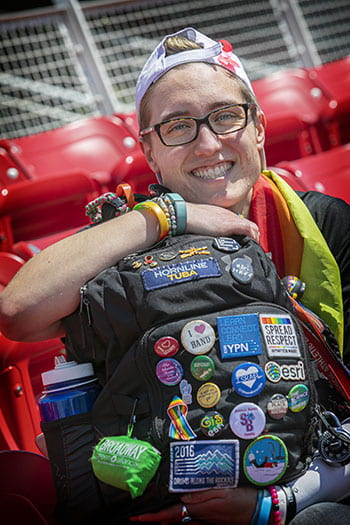
Lucy DiBenedetto ’19
It’s festooned with lanyards, pins and hand-stitched patches that carry messages of diversity — like the patch marking the America East Conference initiative “You Can Play in AE” (since renamed “Spread Respect”) aimed at promoting diversity and inclusion in all America East sports. In fact, Lucy was featured in a USA Today article about the “You Can Play” basketball night at Stony Brook in 2016 with the line: “A tuba player drapes herself in a rainbow flag.”
“Diversity is very, very, very important to me,” said the Westhampton Beach, NY native. “Stony Brook does a good job at furthering it. I think it’s awesome that students from around the world come here to learn and share their experiences with the student body. I’m a huge fan of the Interfaith Center and their efforts to bridge together different groups and different walks of life to promote kindness and peace.”
Before she was enrolled at the University, Lucy was accepted into the Women in Science and Engineering honors program (WISE), a highly selective community of women who are interested in pursuing careers in STEM. The program is intended to empower, encourage and retain women in the field.
“The WISE program is key at creating diversity within STEM, breaking down the stereotype that STEM fields are for men only,” Lucy said.
She is also a member of the Spirit of Stony Brook Marching Band, an organization that Lucy labels “one of the most diverse groups on campus.”
“Its approximately 180 current members are a clear example of people coming together and respecting one another regardless of their backgrounds and beliefs,” she said.
As a coastal environmental studies major with a minor in geospatial sciences, Lucy is just as interested in non-human diversity.
“No living thing, whether terrestrial or marine, is made alike. We all have our differences and that should be celebrated,” she said.
Lucy got hooked on biodiversity growing up by the ocean in Westhampton Beach. “I was fortunate to attend a school district that prided itself on caring for and restoring the environment,” she said. She joined the Westhampton Beach High School Environmental Club and served as recycling coordinator and vice president.
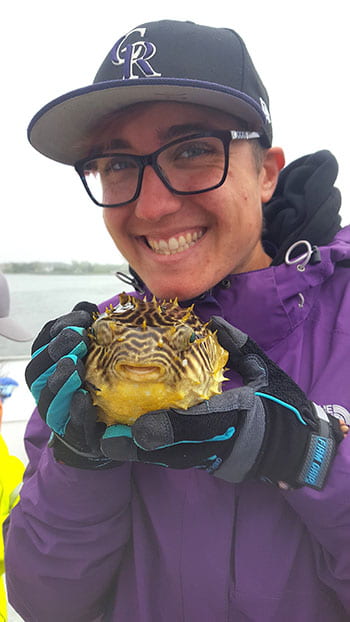
Lucy with a burrfish retrieved from Quantuck Bay.
But it was her time growing up near Quantuck Bay, where she spent time with her mother challenging a proposed development along the bay’s westernmost headwater creek, that helped to unleash the activist in Lucy. She has also benefitted from the encouragement of her teachers and mentors to speak out about causes she’s passionate about.
“While boating in Quantuck Bay I’d look at the water and notice that it wasn’t a pretty color; it was murky brown instead of the typical shades of blue,” she said. That made her question what was happening and she felt the need to investigate.
At Stony Brook, through her WISE affiliation, Lucy immersed herself in research that involved rotations with both the Shinnecock Bay Restoration Program (shinnecockbay.org) and Brookhaven National Lab. When that ended, she was invited to stick around with ShiRP as a benthic (relating to the ocean’s lower layer) monitoring volunteer, assisting in trawls from May 2016 until August 2018.
Those trawls revealed a high presence of thermal pollution, characterized by a low dissolved oxygen level and high temperatures and a scarcity of marine life. Her solution: implement a series of oyster reefs and submerged vegetation to clean out and oxygenate the water column.
During her junior year, Lucy took a course titled “GIS Fundamentals I,” which opened her eyes to a new career vista. GIS (Geographic Information Systems) allows for data visualization (using maps and 3D scenes) and analysis of different areas based on spatial information, such as coordinate points. To further her knowledge of GIS, Lucy applied for a number of related internships, one of which was with Esri, the world’s leading producer of GIS software, where she served as a technical support intern in 2018.
That led to other internships, speaking engagements at multiple GIS conferences in California and at the American Association of Geographers Annual Meeting in Washington D.C. These activities helped her to land a job as a solutions architect for PSEG-Long Island. Geospatial Center Professors Maria Brown, Sung-Gheel (Gil) Jang and Donna Selch helped prepare her for a career as a GIS instructor.
The training also fueled her projects titled, “A Geospatial Analysis of Quantuck Bay, New York: Making Decisions for Remediation” and “Utilizing Geodesign for Restoration Efforts in Quantuck Bay, New York,” which focused on the causes of declining water quality in that region.
To help her prepare for presentations at the 2019 Geodesign Summit and the 2018 Fall Long Island GIS User Conference, Lucy practiced in front of that semester’s GIS Fundamentals class, employing it as a mock audience.
“I didn’t realize I had the gift of communicating science to the general public until I started giving presentations last year,” said Lucy. “To convince non-believers, we need to see a network of people with different backgrounds, methods of thinking and beliefs coming together to create a multidisciplinary widely encompassing solution.”
Mark Nepf (MS, 2017)
 Mark Nepf was an MS student in the Dvarskas Lab of Environmental Economics from 2015 to 2017. During his time at SoMAS, he worked on a hedonic analysis of Suffolk County residential real estate, with a focus on the potential impact of coastal water clarity. By determining if improved water clarity could positively influence housing values, his project aimed to provide an economic measure of the benefits of coastal remediation.
Mark Nepf was an MS student in the Dvarskas Lab of Environmental Economics from 2015 to 2017. During his time at SoMAS, he worked on a hedonic analysis of Suffolk County residential real estate, with a focus on the potential impact of coastal water clarity. By determining if improved water clarity could positively influence housing values, his project aimed to provide an economic measure of the benefits of coastal remediation.
After graduation, Mark accepted a position with Resources For The Future, where he is working on similar environmental valuation studies that look at the impacts of air pollution. He credits his time spent at SoMAS helping him land on the job path he hoped for.
Savannah LaBua (BS, 2016)
From Record-Tying 11 Stony Brook Students Win Prestigious NSF-GRFP Fellowships on Stony Brook News, April 19, 2019.
In a record-tying performance, 11 Stony Brook University students – including nine women – have been awarded prestigious Graduate Research Fellowships (NSF GRFP) by the National Science Foundation. Another six SBU students earned Honorable Mentions. Among those students was Savannah LaBua, a graduate of the Marine Vertebrate Biology program at SoMAS.
Currently working at the National Oceanic and Atmospheric Administration (NOAA), LaBua studies Pacific herring, a critical component of the eastern Gulf of Alaska ecosystem, providing a viable food source for humpback whales, sea lions, seabirds, other fish, etc. Stocks have experienced significant declines in abundance since the development of industrial fishing. The Alaska Department of Fish and Game has closed fishing for eight of the ten stocks managed in Southeast Alaska but most have failed to recover since the 1980’s. Data and knowledge gained from this study would be of great interest in marine ecology because it directly addresses questions of what factors maintain and distribute variability in marine populations and the importance of their influence.
Savannah plans to “start graduate school this Fall at Florida International University under the supervision of Dr. Kevin Boswell.” She met Dr. Boswell through her participation in the National Student Exchange program at Stony Brook University. Savannah credits her participation in the program for providing “me with an opportunity to build my scientific network, acquire new skills and expand my ecological toolbox.” She studied for two semesters at Florida International University under the supervision of Dr. Kevin Boswell, “where we implemented active acoustics and remote sensing technology to examine biological interactions across a variety of habitats.” The research she conducted as an undergraduate reflected well in her NSF GRFP application.
The NSF GRFP was established in 1952 to help develop and boost diversity of the country’s science and engineering research workforce by supporting graduate students who pursue research-based master’s and doctoral degrees in NSF-support STEM disciplines.
“This award is crucial to promoting social mobility for our most promising STEM students and to providing them with the freedom to develop their own research agendas,” said Jen Green, External Scholarships and Fellowships Advisor. “I was humbled by the talent and hustle displayed by this cohort and am thrilled by the university community’s celebration of their accomplishments in this year’s NSF GRFP competition.”
Students interested in the NSF GRFP and other fellowships, should visit the Office of External Scholarships and Fellowship Advising for more information.
Emily Markowitz (BS, 2015)
 In the Fall of 2015, Emily Markowitz was a senior graduating with a major Marine Sciences with minors in Coastal Environmental Science, Geospatial Science and Theatre. She was accepted into the Accelerated BS/MS degree program with Dr. Janet Nye in her Fisheries Ecology Lab. Emily is very excited to start doing real, meaningful research and contribute to the scientific community.
In the Fall of 2015, Emily Markowitz was a senior graduating with a major Marine Sciences with minors in Coastal Environmental Science, Geospatial Science and Theatre. She was accepted into the Accelerated BS/MS degree program with Dr. Janet Nye in her Fisheries Ecology Lab. Emily is very excited to start doing real, meaningful research and contribute to the scientific community.
Emily had a variety of experiences during her time at Stony Brook. She received the Stony Brook Mote Marine Lab Scholarship during the summer of 2015 and spent 10 weeks doing research in a snook release project at the Laboratory’s Aquaculture Park in Sarasota, Florida. She served as the president of the Stony Brook Undergraduate Marine Science Club for two years, and lead the group on activities that included trawling and whale watching trips out of Southampton, seal walks, and volunteering with various organizations such as Coastal Steward and Cornell Cooperative Extension’s Marine Meadow Restoration Program. These organizations have also been included at events like Earthstock. The club also participated in the Pew Charitable Trusts’ Bluefin Tuna Initiative and won a trip to meet with Pew and the head of NOAA fisheries, Sam Raunch, to talk about the Pew initiative. The club continues to provide our community with talks and public screenings of documentaries. For many of the students in the club, these events are their introduction to research and conservation issues in Marine Science. In 2014, Emily also headed a major outreach program in which Marine Science Club members gave presentations (with valuable assistance from Dr. Larry Swanson) to two local middle schools about marine pollution and how it affects Long Island’s local biodiversity.
Emily’s experiences as a crew member on the R/V Seawolf, including trips to assist the New Jersey DEP in doing trawls and collecting data for their quarterly stock assessment program allowed her to see, first-hand, the distribution and density of our coastal waters and how a program like this works.
Emily’s undergraduate research experiences have allowed her in a number of labs on campus, including those of Drs. Janet Nye, Brad Peterson, and Joe Warren. While each lab pursued different questions and had different approaches and specialties, each experience provided her with greater insight into laboratory structure and methodology. While studying abroad in New Zealand, she also worked for Dr. Steven Wing in his lab. Wing is exploring isotope markers in fish populations.
Everything that Emily learned at Stony Brook and all of the extracurricular activities she participated in made her a better candidate for the BS/MS accelerated program and better prepared to write her thesis and, she hopes, “to pursue my Ph.D”.
Emily encourages students to join a club and meet people and get involved with the programs and organizations that are around campus and off campus! She says “that’s how you make opportunities, and build your experience! The way I got my first opportunity in a lab was by asking. Seek out professors and find out what they’re doing. Pick out what interests you and offer your services. Learn to code! Take classes in R or Matlab and learn ArcGIS. These programs make it possible to do the analysis that makes research relevant.”
Tyler Abruzzo (MS, 2015)
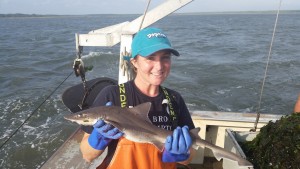 In 2015, Tyler Rose Abruzzo became the first student to graduate from the combined BS and MS program at SoMAS, a program designed to allow high achieving undergraduates to use up to 12 credits of course work towards both their undergraduate and graduate degrees. For her Master’s thesis, Tyler studied the temporal and spatial dynamics of the finfish and macro-invertebrate community in the Peconic Bay Estuary under the joint direction of Professors Dr. Robert Cerrato and Dr. Michael Frisk. She was also involved in sampling finfish, macro-invertebrates and sediment in the Great South Bay and Mill Neck Creek. According to Tyler, “My experiences and field work at SoMAS have been not only knowledgeable but fun and unforgettable. My professors and peers have left a lasting impression on me.”
In 2015, Tyler Rose Abruzzo became the first student to graduate from the combined BS and MS program at SoMAS, a program designed to allow high achieving undergraduates to use up to 12 credits of course work towards both their undergraduate and graduate degrees. For her Master’s thesis, Tyler studied the temporal and spatial dynamics of the finfish and macro-invertebrate community in the Peconic Bay Estuary under the joint direction of Professors Dr. Robert Cerrato and Dr. Michael Frisk. She was also involved in sampling finfish, macro-invertebrates and sediment in the Great South Bay and Mill Neck Creek. According to Tyler, “My experiences and field work at SoMAS have been not only knowledgeable but fun and unforgettable. My professors and peers have left a lasting impression on me.”
Tyler went directly from graduating at Stony Brook to her new position as a Staff Scientist at H2M Architects & Engineers, where she will be working on delineating wetlands throughout Long Island for construction projects as a consultant. She will also be acquiring environmental permits for clients for proposed construction work, as well as working with Townships for project approval. According to Tyler, “my degree at Stony Brook gave me a broad background in general ecology, therefore I was able to find a company that will help start my career as a biological environmental consultant.”
Her advice to other students is to take advantage of the integrated BS/MS program at SoMAS and to take classes that might be outside your comfort zone to gain knowledge on other subjects. She says “You’ll never know what type of experience/knowledge an employer might be looking for. Therefore, the more knowledge you have about different subjects and the more field techniques you learn will better your chances of landing a job. She describes the experience of the BS and MS program as being ”…a smooth transition from being an undergraduate to a graduate. I knew most of the faculty and their research at SoMAS from my undergraduate classes which made finding an adviser who would support the type of research I wanted to do for my Masters much easier.”
Michael Colbert (BS, 2015)
Everyone talks about the weather, but Michael Colbert has more than a casual interest in that topic — he studied it at Stony Brook University. To be sure, the atmospheric and oceanic sciences major can’t remember a time when he wasn’t passionate about the weather. “My mother says that as a baby, there were times when I wouldn’t fall asleep unless she took me outside to look up at the sky first,” Michael said.
When he was in elementary school, Michael used writing assignments as an opportunity to report on atmospheric conditions. “What was the weatherman predicting for tomorrow? How long were the icicles hanging off my roof? How strong were the winds last night?”
Michael said that growing up in a waterfront home on the Neguntatogue Creek in Lindenhurst, New York — which gave him a front-row seat to view nature’s full force — influenced his decision to pursue atmospheric and oceanic sciences.
“On the coast, you often see precipitation transition from snow to sleet to rain, and then back the other way as cold air comes in at the end of a storm. You also get to see coastal flooding and experience more intense winds found near the ocean,” he said. “During the warm season, the sea breeze can trigger thunderstorms, and that happens to be the topic of my Honors College senior research project — what are the factors that allow some sea breeze boundaries to trigger thunderstorms?”
The Internet has made it easy for Michael to watch the weather unfold minute by minute on satellite and radar. As early as his freshman year in high school, he paid special attention to weather trends, which led to him posting forecasts on Facebook.
When Michael arrived at Stony Brook, he created SBUWeather, a Facebook page managed by the Meteorology Club, which provides forecasts to more than 700 students, staff and faculty on campus and to surrounding communities. Posting through social media helped provide more exposure for the Stony Brook Meteorology Club which enabled it to grow its current membership to 40 weather buffs. After he was elected president, he and his expanded club created a Web page on which they post forecasts.
Under Michael’s leadership, the club made its debut at the Involvement Fair, wearing T-shirts the members created. Feeding on a growing interest in the club, Michael began organizing field trips to regional conferences; the National Weather Service in Upton, New York; and local news stations to observe live forecasts. In 2013 “we visited ABC in New York City, and” in fall 2014 “we took a trip to News 12,” he said. To further increase its exposure, Michael initiated the club’s participation in Earthstock the past two years. The club competed in the 2014 Roth Regatta with a boat named “Hurricane Force.”
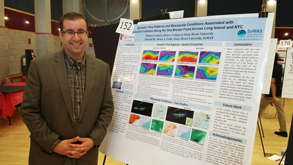 In 2014 Michael served an internship at the Upton National Weather Service facility, where he collected data using instruments called radiosondes, which are battery-powered devices carried into the atmosphere that transmit findings by radio to a ground receiver. He is also the proud recipient of the Timothy Magnussen Memorial Scholarship for undergraduate students majoring in atmospheric sciences. During the summer of 2014, he conducted research at Colorado State University, exploring the volume of hail in thunderstorms and associated lightning flash rates. These findings were presented at the American Meteorological Society annual meeting in Phoenix, AZ, in January 2015.
In 2014 Michael served an internship at the Upton National Weather Service facility, where he collected data using instruments called radiosondes, which are battery-powered devices carried into the atmosphere that transmit findings by radio to a ground receiver. He is also the proud recipient of the Timothy Magnussen Memorial Scholarship for undergraduate students majoring in atmospheric sciences. During the summer of 2014, he conducted research at Colorado State University, exploring the volume of hail in thunderstorms and associated lightning flash rates. These findings were presented at the American Meteorological Society annual meeting in Phoenix, AZ, in January 2015.
Michael helped coordinate a joint effort with the School of Journalism to provide broadcast experience to atmospheric and oceanic science majors.
“Even though the National Weather Service is my first choice to start my career path, every time I’m in a newsroom I get an overwhelming feeling of excitement, so I hope I get that opportunity to do that at some point in my life,” he said. Michael started his graduate studies at Penn State in the fall of 2015.
“The weather is something that affects everyone every day. It never stops changing, so I can never stop watching it,” he said.
From Michael Colbert ’15 Is Doing Something About the Weather by Glenn Jochum; photo by John Griffin
Erica Cirino (BA, 2015)
Photo above: Erica Cirino ’15 on a research expedition.
From Environmental Journalist Erica Cirino ’15 Finds Solace in Nature on Stony Brook News by Glenn Jochum on April 17, 2017
Writer, artist, runner and licensed wildlife rehabilitator — this is how Erica Cirino ’15 identities herself. Perhaps survivor should be added to the description.
Her childhood memories are dominated by discord. Voices escalate in anger and accusations; a door slams, followed by the sound of a woman sobbing. A car starts up in the driveway; a man is bound for who knows where. When the little girl wakes up in the middle of the night, she sees her father on the couch. Again.
The days that follow bring more of the same — ongoing family drama that no child could be capable of stopping or escaping.
This is how Erica remembers parts of her childhood — a painful chapter that will stay with her always but was instrumental in making her the strong woman and successful wildlife journalist that she is today.
While her parents didn’t get along with each other, they did each stand by her side as she grew up. While at times her life wasn’t easy, Erica is grateful for her parents, who offered her their support and resources, cheering her on at track meets, buying her art supplies and encouraging her to pursue her natural talents.
But Erica also dug deep into her personal well and at a very young age found a way to cope with domestic upheaval. She chanced upon an inviting world, just walking distance from where she lived. This haven, Caumsett State Historic Park Preserve in Lloyd Neck, New York, was inhabited by chattering squirrels and nervous rabbits, scolding blue jays and drumming woodpeckers. With a notebook and sketch pad in hand, Erica recorded the wonders of the natural world.
Caumsett was where she could retreat into an alternative reality. As Erica got older, she found the preserve offered her a new kind of escape — running. At first she pursued it to put distance between herself and her pain. Eventually it became a need that she satisfied by becoming a competitive runner in high school.
Cold Spring Harbor High School required seniors to perform 20 hours of community service. Serendipitously, Caumsett had a wildlife hospital, so Erica volunteered there. She found the experience both uplifting and transformative: In the process of rehabilitating sick and injured wildlife, Erica learned how to heal her own emotional wounds.
She worked with opossums, turtles and other small mammals, but especially enjoyed caring for injured hawks and owls. Learning about the creatures’ life histories was soothing, she says, and she came to view them as new family members who depended upon her for their survival and would never abandon her.
Although Erica found the work rewarding, it was not without its challenges.
“It was a dirty job, one in which I was on my feet all day, got kicked and scratched, and was exposed to the elements,” she says. “But it taught me how to deal with loss and death, and perhaps it braced me for the loss of my father from my life,” she says.
Erica says working with wildlife filled a hole in her soul, and she became a licensed wildlife rehabilitator at age 16.
By this time, running had also taken on a greater significance in her life, becoming far more than a coping mechanism. As Erica’s reputation as an athlete grew, 30 colleges lined up to offer her track and cross-country scholarships. She pondered her options, but in the end her love for healing wounded animals won out.
Erica decided to live at home, continue to rehabilitate animals and apply to Stony Brook Southampton, where she could study marine vertebrate biology and further her career in wildlife sciences. Erica was accepted but shortly thereafter, as a result of New York State budget cuts, Stony Brook Southampton relocated its undergraduate programs and students to its main campus where she received her BA in Environmental Studies.
The change in venue did not deter Erica, who immersed herself in her studies. She had loved science and writing and now she looked to combine her thirst for scientific knowledge with her creative nature and become a science writer.

East Setauket, NY; Safina Center: Carl Safina talks with Stony Brook University alumni and freelance science writer and artist Erica Cirino.
It was in Professor Heidi Hutner’s Environmental Writing and Media class in 2012 that Erica met the person who would most influence her academic and professional career, Carl Safina. Safina, a renowned conservationist, author and founding president of the non-profit organization, The Safina Center, was guest lecturing about the human connection to nature.
“He asked the class a question about conservation and I answered it, and although I don’t recall my question I do remember Carl challenging me to delve deeper,” she says. “I was a confident college sophomore at the time and I was a little annoyed because I thought I had been so eloquent. But I went home that day and realized he was really helping me.”
Little did Erica know at the time that this encounter was the beginning of arguably her strongest and most formative professional relationship —one that would allow her to flex her literary muscles and truly discover both the scientist and the writer within.
Erica thrived at Stony Brook and enjoyed a college career that most students would envy, going on to make dean’s list every semester and winning seven awards. In 2014 alone, she landed three awards — the Sustainability Studies Program Director’s Award for Academic Excellence, the School of Marine and Atmospheric Sciences’ Undergraduate Honors Award, and was named the Stony Brook University Undergraduate College of Leadership and Service Creative Expressions Contest Winner.
When Erica was in her senior year, she and her mother were researching graduate schools and discovered the perfect solution to cement her career as a science writer — Stony Brook’s Master of Science Program in journalism — a curriculum that she found appealing because of its fast pace and the fact that she was “never good at sitting still.”
Another plus, she says, is that the program required that she would only have to spend a year and a half in the classroom. After some consideration, Erica decided she wanted to become a freelance science writer.
Erica felt confident she could embark on this new course of study, as her competitive running background imbued in her strong time-management skills, self-motivation and drive.
“I can do this,” she remembers thinking.
Through her studies, she honed her photography skills but sought to become a better writer. Her final master’s project, which required her to find and cover a big story, gave her that opportunity.
For her project, Erica highlighted the 2014-2015 avian influenza epidemic. She traveled to Wisconsin, one of the Midwestern states where the poultry industry was adversely affected.
As her full-time freelance writing career took off in 2016, Erica began writing for a greater number of publications, including National Geographic’s Voices blog. She focused heavily on ocean issues, in February 2016 and wrote a piece titled, “More Plastic, Fewer Oysters?” This led to a whole National Geographic blog series on ocean plastics. The blogs included interviews with some of the foremost experts on plastic pollution.
In October 2016, professional artist and photographer Chris Jordan, famous for his shocking photographs of dead albatross filled with ocean plastic, mentioned Erica’s work to a Danish organization working to quell plastic pollution. Jordan was invited on a trip across the Eastern Pacific Ocean and the organization, called Plastic Change, was looking for an American journalist.
Jordan, who knew of Erica through the Safina Center — where he was a Fellow and Erica was a freelance writer — recommended the group bring her on the voyage. Last spring Erica attended one of Jordan’s art shows in New York City and introduced herself. The two talked for hours about art and potential future collaborations.
In November, Erica and Jordan embarked on the 54-foot S/Y Christianshavn with members of Plastic Change in an effort to generate publicity about the group’s fact-finding expedition.
The vessel used trawling nets to determine the quantity, type and current state of plastic pollution on the Pacific Ocean Gyre, a swirling ocean current sometimes referred to as the Great Pacific Garbage Patch.
Aboard the ship, Erica focused on still photography and writing, and Jordan concentrated on filming plastic and the crew at work. Climbing into a patched-up old inflatable dinghy that was launched from the main vessel, Erica and Jordan were set adrift for a half-hour or so. They were entrusted with a waterproof camera bag containing thousands of dollars’ worth of equipment and dealt with setbacks — such as a slow leak that sprayed water everywhere, drenching them.
Erica did more than sharpen her journalism skills on the ocean voyage, however.
“The crew fully incorporated me into sailing tasks, which I really appreciated,” she says. “It was incredible learning how to sail and to do it correctly. I owe most of what I learned to the sailing partner assigned to me — Rasmus Hytting.”
Hytting, or “Ras” as Erica now refers to him, is a Danish carpenter and boat builder with more than three decades of sailing experience. While Hytting was considered to be a stern taskmaster and judge of his crewmembers’ sailing techniques, Erica’s quickness to learn garnered his respect, laying the foundation for a friendship they shared during the six weeks they spent together.
The sea can be a harsh environment for someone embarking on an extended maiden ocean voyage. “I truly felt comfortable on the ship despite the fact it was small and heaved around by huge waves. Spending any time in the cockpit usually meant you would get drenched by either waves or rain,” Erica says. “Admittedly, life on board wasn’t easy — for instance, our toilet was a bucket and we could only wash sparingly with fresh water — but I enjoyed the simplicity and challenges of being a sailor enormously because it made me appreciate what we did have on the ship —camaraderie and friendship.”
Erica adds that even when the ship experienced an engine malfunction and a snapped rudder en route to Hawaii, she never felt that she was in danger because she trusted the crew completely.
Even before this ocean assignment, Erica’s writing has appeared in prestigious publications such as The Atlantic and Scientific American. A sampling of her stories in those publications follows.
- More Plastic, Fewer Oysters? (National Geographic)
- The ‘Curious’ Robots Searching for the Ocean’s Secrets (Atlantic)
- Sea Unworthy: A Personal Journey into the Pacific Garbage Patch (Scientific American)
Her work has not gone unnoticed. None other than environmentalist humanitarian movie star Leonardo DeCaprio shared her Scientific American plastics story on his Facebook page; that led to a huge spike in readers and visitors to her own web site. Erica is eagerly bringing her message to the community, which has led to a speaking tour.
Although Erica is largely responsible for who she has become, she recognizes that every aspiring trailblazer needs assistance from an established professional, and Erica is grateful for the connections and opportunities Safina gave her.
“Most of us remember someone who took us under their wing, believed in us, let us think we could succeed,” says Safina. “We may have told them how much they meant to us. But the only way to show it is to be like them to someone.”
Mentorships are relationships after all, and the mentee must also recognize their value.
“I recommend that every young person find a mentor,” says Erica. “Carl is a great mentor to me not only because he is knowledgeable about the field I work in, but because he is a patient teacher who cares about my success. Find someone who is willing to both support and challenge you and you will be amazed by how much you grow personally and professionally.”
Erica’s life voyage could have derailed her dreams but her persistent optimism kept them afloat. “Life is full of suffering but if we work at righting our wrongs, I know it can also be full of beauty, love and happiness,” she says. “I’ve seen and experienced the worst and the best in life, and that’s helped me overcome new challenges that come my way.”
–Glenn Jochum
Danica Warns (MA, 2015)
According to Danica Warns, “the Marine Conservation and Policy program is a very unique and fast-track graduate program that helped launch my career in environmental conservation.” She appreciated the flexibility to select the classes she wanted to take and how she could “design (her) capstone project to match (her) career goals” that allowed her “to tailor the program to get the most out of my degree.” As she knew she was interested in a career in environmental outreach, Danica chose to take several courses in the Alda Center for Communicating Science. The classes “were so valuable and enhanced my communication skills greatly,” she says.
Danica highlights the benefits of the program:
If it weren’t for the flexibility of this program, it would have been difficult for me to meet my goals in such a short period of time. The strong background in current marine conservation issues and communication skills I learned put me in a competitive position for pursuing a career in environmental outreach.
She credits the MCP program for helping her get to her current position, working for the NYC Parks Department engaging volunteers in wetland restoration projects.
Christopher Martinez (PhD, 2014)
Christopher Martinez may be a marine biologist from California, but he didn’t grow up near the ocean. Visalia, his hometown, is a small farming city in the San Joaquin Valley. His family of migrant workers traveled the West picking crops. “Because of their hard work, I was able to pursue my dream,” said Christopher, who earned his PhD in 2014.
That dream was to study biology. Animals and insects always interested Christopher, but when he made the three-and-half-hour trip to the ocean, “I was fascinated by the diversity of ocean life.”
As an undergraduate at the University of California at Santa Barbara, his passion for marine sciences solidified. Christopher became research diver certified and was listed as co-author of a study, published in 2011 in Marine Biology, for his research in French Polynesia.
When Christopher applied to the graduate program at Stony Brook, the School of Marine and Atmospheric Sciences (SoMAS) awarded him a Turner Fellowship.
The W. Burghardt Turner Fellowship helps qualified underrepresented graduate students seeking certain degrees. Since 1987, the Fellowship has graduated more than 400 degree recipients.
The Center for Inclusive Education (CIE), which provides Turner Fellowship funding, became Christopher’s second home. “The CIE offered me a support system and a sense of family,” he said. After losing outside funding, the CIE helped Christopher pay for flounder movement pattern research in Long Island bays.
Michael Frisk, associate professor in SoMAS and Christopher’s PhD advisor, helped him redirect his research. “Mike told me to design a project that truly reflected my academic interests,” said Christopher.
After studying geometric morphometrics with Distinguished Professor emeritus F. James Rohlf, Christopher pursued ecological morphology of skates and rays and spatial modeling of marine communities in the Northwest Atlantic with a grant Frisk helped him secure.
“Chris was a very bright, dedicated student,” said Frisk. “He read the literature across disciplines and developed and applied modeling methods to quantify fish communities.”
These skills helped Christopher develop his postdoctoral research proposal and earn dual fellowships with the American Museum of Natural History, where he will take advantage of the Museum’s very large fish collection.
Christopher credits much of his success to Stony Brook. “The overall level of research among faculty and graduate students at Stony Brook is really impressive,” said Christopher. “I’ve had many opportunities at Stony Brook because of its proximity to New York City, specifically the Museum of Natural History.”
Sarah Schaefer (MA, 2013)
Sarah Schaefer is currently the Program Coordinator for the Peconic Estuary Program (PEP). In this job she facilitates the Peconic Estuary watershed protection and restoration projects, monitoring and research. She also assists municipalities and not-for-profits to form partnerships, secure funding and plan and implement water quality improvement and habitat restoration projects. The PEP is a partnership comprised of stakeholders within the estuary. The program is responsible for creating and implementing a management plan to protect the estuary.
The Peconic Estuary is one of twenty-eight (28) estuaries in the National Estuary Program (NEP), administered by the United States Environmental Protection Agency (USEPA) under the auspices of Sec. 320 of the Clean Water Act to protect and preserve nationally significant estuaries which are threatened by pollution, development, or overuse. The Peconic Estuary was accepted into the program as an “estuary of national significance” in 1992 after citizen groups formed in response to the Brown Tide algal bloom events in the mid 1980’s and early 1990’s. At that time, it became the 20th National Estuary Program in the country.
The Peconic Estuary is located between the North and South Forks of Long Island, and consists of over one-hundred (100) harbors, embayments and tributaries which span more than 125,000 acres of land and 158,000 acres of surface water.
Sarah offers the following advice to incoming students:
“Stay open to all possibilities, whether it be lab work, field work, research etc. All experiences will give you some skill that will be valuable down the road. Make the most out of whatever opportunities you are given and work hard. Communication skills and ArcGIS experience are valuable strengths- take advantage of the chances you get to learn and practice these skills.”
Sarah believes that the Marine Conservation and Policy (MCP) Program prepares students for real world careers because you are provided experience in many different areas like environmental/marine policy, marine research, field work, communicating science. The program provides the experience to be competitive for marine conservation and policy programs. She says that “everyone in my graduating class had slightly different interests and the program gave everyone the freedom to pursue those interests.
Interviewed by MCP student Whitney Leigh
Brian Gallagher (BS, 2013)
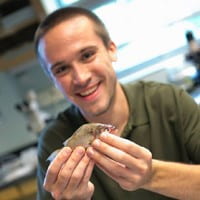
Brian holding a small adult white perch (Morone americana) collected in the Hudson River for his MS thesis research at Chesapeake Biological Laboratory.
Throughout my (still ongoing) education and career in aquatic ecology, I have developed a strong interest in how human impacts such as climate change, harvest, and contaminants influence the ecology and evolution of fishes. My four years as a Marine Vertebrate Biology major at SoMAS from 2009 to 2013 were crucial in jump-starting these interests, most notably though opportunities to conduct undergraduate research. After gaining important experience in three different labs, I took on a more ambitious role during my last two years, working with Mike Frisk, Anne McElroy and Bob Cerrato on a collaborative study of six historically overfished winter flounder populations along an urbanization gradient in Long Island. This project was a formative experience, as it made me grapple with the complexity of how different populations respond to multiple human impacts in the real world.
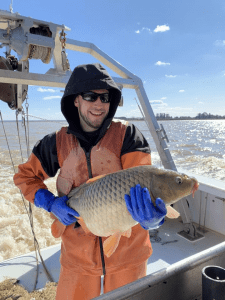 After graduating from SoMAS, I completed an MS program at Chesapeake Biological Laboratory (part of the University of Maryland Center for Environmental Science) from 2013 to 2016, where I studied migration behavior and long-term abundance patterns in Hudson River white perch. Importantly, my previous experience at SoMAS gave me a firm background for this study, as I had already worked with white perch and familiarized myself with relevant laboratory techniques (especially working with fish otoliths) as an undergraduate. While I very much enjoyed doing research and taking classes as a student, I felt the need to take on a new type of role to become better-rounded, which led me to take my current job as chief scientist of the Juvenile Striped Bass Seine Survey at the Virginia Institute of Marine Science, one of the longest-running aquatic monitoring programs on the United States east coast. This job, in addition to being a lot of fun, has allowed me to broaden my skills and experiences in a way that would not have been possible if I had stayed in school
After graduating from SoMAS, I completed an MS program at Chesapeake Biological Laboratory (part of the University of Maryland Center for Environmental Science) from 2013 to 2016, where I studied migration behavior and long-term abundance patterns in Hudson River white perch. Importantly, my previous experience at SoMAS gave me a firm background for this study, as I had already worked with white perch and familiarized myself with relevant laboratory techniques (especially working with fish otoliths) as an undergraduate. While I very much enjoyed doing research and taking classes as a student, I felt the need to take on a new type of role to become better-rounded, which led me to take my current job as chief scientist of the Juvenile Striped Bass Seine Survey at the Virginia Institute of Marine Science, one of the longest-running aquatic monitoring programs on the United States east coast. This job, in addition to being a lot of fun, has allowed me to broaden my skills and experiences in a way that would not have been possible if I had stayed in school
Now, I am preparing to move on to the next step in my career, as I will be starting a PhD at Concordia University in Montreal this coming fall, with support from an internal fellowship and a Fulbright Award. My research will focus on how population characteristics and ecological feedbacks will promote or constrain adaptation to climate change across multiple populations of brook trout in Cape Race, Newfoundland. Such research will be crucial for informing the conservation and management of salmon, trout, charr, and other coldwater fish populations that will be threatened by climate change in the coming decades.
Kenneth Lang (MA, 2013)
Former Marine Conservation and Policy Masters student Kenneth Lang (fall 2013) was recently selected for the prestigious John A. Knauss Marine Policy Fellowship. The competitive fellowship recruits students from 33 Sea Grant programs nationwide to complete a one year paid fellowship in either the legislative or executive branch of the U.S. government in Washington D.C. Ken’s placement in the program is with NOAA’s International Affairs Office where he will focus on research in Europe, Russia, and the Arctic beginning in February.
While in Stony Brook’s Marine Conservation and Policy program, Lang completed an internship with the United Nations Development Programme (UNDP) and the Global Environment Facility (GEF) International Waters Programme, where he studied three dozen transboundary water environmental remediation projects. Lang felt that his Knauss placement was a perfect fit with the skills and knowledge he obtained during his time in the MCP program.
“My internship taught me a great deal, and the MCP program was the perfect leader into the Knauss fellowship,” said Lang. “You get experience in both science and policy in the MCP program.”
The Knauss Fellowship, which started nearly 30 years ago, provides an excellent opportunity for students interested in Marine Policy to kickstart their careers and obtain relevant, high-level experience in the nation’s capital. According to Professor Anne McElroy, former director of NY Sea Grant and current Graduate Program Director as SoMAS, “there is no better opportunity than the Knauss Fellowship for getting first-hand experience in how policy is made or establishing a professional network within the environmental management community.”
Lang, whose 2014 class includes the 1000th fellow to enter the program, has this advice to other MCP students aiming to follow his lead: “Graduate students hold a privileged status in society. Use that status,” says Lang, “You get where you want to go by talking to other people.”
Owen Doherty (PhD, 2012)
Owen Doherty earned his PhD from Stony Brook in December 2012, working on mineral dust transport. He, Nicole Riemer, Sultan Hameed and Kirk Cochran successfully identified a new paradigm that explained variability and loadings and sources of mineral dust blowing off Africa. He then went on to post-doc at Scripps Institution of Oceanography in San Diego. According to Owen, “life as an academic post-doc is sort of the pinnacle. You get to spend almost all of your time deep into a research project, learning new things and exploring your ideas in depth.”
In addition to conducting research while at SoMAS Owen helped teach a number of courses on a wide range of topics including global environmental problems, thermodynamics, remote sensing, MATLAB and data analysis. “Kirk Cochran and Anne McElroy taught me how to develop, manage and teach a large overview course. I owe them a lot for showing me the ropes.” He also developed leadership skills at Stony Brook “as head of Friday Beers, to head of the softball team and ultimately president of the grad club and a member of the Dean search committee.”
Owen’s data analysis background and leadership skills have continued to serve him well. He recently started up a consulting firm called Eagle Rock Analytics. He admits that starting your own business is “both daunting and exciting.” He gets to incorporate his wide range of skills to brainstorms new project ideas, collaborate with others, do science and data analysis every day. “The future of science is multidisciplinary studies, so folks who have a wide breath of knowledge to work from are at an advantage.”
Owen’s advice for students at SoMAS are entrepreneurial in spirit as he puts the onus on individuals to guide their own learning, rather than always relying on professors to lead the way. “Taking courses in grad school is like riding a bike with training wheels — take off the training wheels, read a paper, set up an experiment and teach yourself!”
Cassie Bauer (MS, 2012)
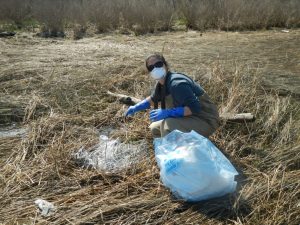 Cassie Bauer received her BS and MS from SoMAS in 2009 and 2012 respectively. Her thesis research involved the physical processes that contribute to localized, seasonal hypoxic conditions in the bottom waters of Smithtown Bay, Long Island Sound.
Cassie Bauer received her BS and MS from SoMAS in 2009 and 2012 respectively. Her thesis research involved the physical processes that contribute to localized, seasonal hypoxic conditions in the bottom waters of Smithtown Bay, Long Island Sound.
According to Cassie, “My thesis work gave me experience doing research in the Sound, understanding the Sound’s water quality issues, and developing relationships with researchers and environmental groups. This directly prepared me for a job as the Long Island Sound Study Coordinator”
Cassie works with the New York Department of Environmental Conservation as the Long Island Sound Study Coordinator. This is a bi-state partnership to restore and protect the Long Island Sound where her job responsibilities include co-chairing technical work groups, attending meetings, managing grants, collecting data on environmental indicators, tracking state activities, and writing reports, newsletters, and management plans. According to Cassie, “I also get to interact with many local environmental organizations and help out with various educational and outreach events, which I think is the most exciting aspect of my job.”
Her advice to incoming and current students is to “take advantage of the knowledgeable and friendly faculty and staff and the excellent resources SoMAS has to offer.”
Elizabeth Rogers (MA, 2012)
In her current role as Fire Island National Seashore’s Public Affairs Specialist, Elizabeth manage press relations, digital media, and lead science communications efforts. She works closely with experts from all divisions within the National Park Service and with researchers and partners to develop communications products for a variety of audiences.
Elizabeth offers the following advice for incoming MCP students:
“Get experience. Shadow, volunteer, intern, or work at an organization or in a position that interests you. There is no better way to find your way. Through these experiences you are bound to meet someone who can help connect you to the next best step in your career. So be open to every opportunity that comes your way. You never know where it may lead you!”
Elizabeth says that she “was fortunate enough to be involved in a student training program with the National Park Service during my time at SoMAS.” While managing my studies and a full-time job was not easy, the two programs prepared her well for the work she does now.
Interviewed by MCP student Whitney Leigh
Jake LaBelle (MA, 2012)
Jake LaBelle, a graduate of the Marine Conservation and Policy (MCP) Master’s program, has found career success at the New York Seascape.
The New York Seascape, a program operated through the Wildlife Conservation Society, seeks to protect habitat and species that rely on New York’s coastal waters. They use a combination of research, education, and policy to achieve this goal. LaBelle works as research coordinator through New York Seascape, a position that helps him engage in his true passion: sharks.
“Getting to live in New York and do fieldwork with sharks is pretty incredible,” says Labelle, “I’ve always loved sharks.”
LaBelle got involved with New York Seascape by doing an internship with them during his time working on his MCP degree. He got involved in more and more projects until he became indispensable to the organization, at which point he was offered a job.
Even before that, LaBelle spent time working with sharks. Prior to attending Stony Brook University, he volunteered at the Bimini Biological Field Station. The Field Station gathers data on sharks in the Bahamas, which is then utilized by universities and professors, including SoMAS professor Dr. Demian Chapman, who does genetic studies on the samples gathered there.
These experiences were key for LaBelle, who came from non-scientific background. His undergraduate degree was in International Affairs. A lot of his success came from talking to people involved in the field, who knew some way he could get involved. This included his work in Bimini, and other places as well.
“I always loved aquariums and marine biology, and started by volunteering at the National Zoo,” states LaBelle.
Currently, LaBelle is working on research on Sand Tiger and Shortfin Mako sharks in the Great South Bay. By tracking these sharks, he is hoping to get more information to construct maps of essential habitat for these species. LaBelle feels that GIS courses taken as an MCP student were indispensable to this work, and that these and other experiences as an MCP student will continue to be useful in his chosen career path.
Laura Picariello (MA, 2012)
Laura Picariello, former MCP student, is busy pursuing a career in Louisiana with the Gulf United for Lasting Fisheries, part of the Audubon Nature Institute. As a Research Assistant working with a wide variety of audiences, she says the Marine Conservation and Policy program really helped her find her career.
“You deal with such a wide range of issues in the program,” says Picariello, “it’s not so specialized.”
The fact that the program focuses not only on science coursework, but communication, environmental law, and policy creates an environment where students can about a vast amount of topics in a short amount of time. This leaves them better prepared to find a career, maybe not even one they had expected.
“This opportunity came up. It was not the specific thing I was looking for,” state Picariello, “But I’m thrilled to be here. I’m loving where I’m at, working in the transition between fisheries and management.”
Picariello was traditionally trained as a musician, but found that she couldn’t live away from the ocean. She choose the Marine Conservation and Policy program in order to change her career pathway and improve her job satisfaction. What other advice does she have for current or prospective students wishing to do the same?
“We all had our ideas about where we wanted to go,” she says, “but don’t limit yourself in where you want to go. Being open leads you to interesting places.”
Christopher Lang (MA, 2012)
Christopher Lang, a graduate of the Marine Conservation and Policy (MCP) Master’s Program, is using his degree to make a difference in environmental policy.
Lang, who graduated from the MCP program in 2012, works as a Legislative Fellow in the New York Senate. The prestigious Legislative Fellowship Program, which accepts graduate students from a variety of programs, pairs students with New York Senators to do legislative research and write policy. Lang is working with Senator Catharine Young whose work in agriculture and environmental policy is a good match for Lang’s interests and abilities.
Lang hopes to focus on aquaculture policy during his time in the New York Senate, and attributes much of his professional success to the MCP program and to the courses he took during his time at Stony Brook University.
“I definitely wouldn’t be in a position to get this job without the MCP program,” says Lang.
The MCP program allows students to tailor their degree, offering courses in environmental law and policy, science communication, and other more traditional science-based conservation classes. After students complete their coursework, they complete a capstone project or internship, where they apply the skills developed in classes to real-life scenarios in the workplace. Lang chose to participate in an internship with the Mystic Aquarium as an educator, a position that gave him some extra experience in communication. “I never dreamed this was where it would take me. Use the diversity of the program to your advantage,” Lang advises current and prospective students.
Lang certainly has done that. Having received a Bachelor’s degree in Biology from Providence College, he took Environmental Law classes as an MCP student, which helped him understand and become familiar with court and law documents. However, Lang believes the science communication courses were the most beneficial for him.
“Those courses can prepare you for anything. I had a lot of fun in my improvisation course, and learned so much as well,” states Lang.
Looking forward, Lang plans to use the connections and skills he gains as a Legislative Fellow to his advantage in future work with environmental policy, either in a state or federal agency or in a private firm.
John Holden (BS, 2011)
John transferred to Stony Brook-Southampton campus for the fall 2007 semester as a Marine Science major and graduated in spring 2011 with a Bachelor of Science degree. As an undergraduate, he took a suite of marine-related courses – all of Physical, Biological, and Coastal Oceanography, as well as Long Island Marine Habitats and Experimental Marine Biology. These experiential classes gave John the opportunity to get out on the water and gain practical experience to compliment what he was learning in the traditional classroom setting.
While a student, John also became involved in a number of research projects. In 2010, he was an intern in Dr. Chris Gobler’s lab at Southampton working on mesocosm experiments pertaining to the Shinnecock Bay Restoration Project (ShiRP). During that summer, he also participated on the Southampton Blue Oyster Project (S-BOP), where he worked for Drs. Kurt Bretsch and Joe Warren monitoring oyster growth and water quality conditions at several locations within the Shinnecock and Peconic Bays. After graduation, he continued working as a technician on the ShiRP project, as well as crewing on the research vessels out of the SoMAS Southampton Marine Station and on SoMAS’s R/V Seawolf out of Port Jefferson.
John is currently working for the Marine Program of Cornell Cooperative Extension of Suffolk County as a fisheries technician. He is working on two different projects. John works on the lobster pot retrieval project in Long Island Sound, working with local fishermen to retrieve derelict lobster pots. The second project involves testing new fishing gear aimed at reducing by-catch. He has worked on ocean trawlers testing out new gear for the summer flounder fishery aimed at reducing sea turtle by-catch, as well as new gear for the squid fishery.
John reflects on his time at SoMAS: “From SoMAS I have learned the importance of working well with others as a team, seeing something all the way through, to finish what is started, and to do a thorough job not just for myself but for others as well.”
Morgan Gelinas (MS, 2011)
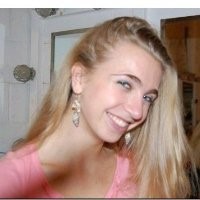 Morgan Gelinas (MS, 2011) studied ship wakes in the Venice Lagoon, Italy. Here, very large ships routinely navigate a deep dredged channel cut through a shallow lagoon. The wakes they create propagate over the adjacent shoals for long distances, resuspending sediment as they go. Morgan described these wakes as Bernoulli waves, or non-linear N-waves, using the same equations that govern the propagation of tsunamis over the deep-ocean basins (Gelinas, M, H. Bokuniewicz, J. Rapaglia, and K.M.M. Lwiza, 2013. Sediment Resuspension by Ship Wakes in the Venice Lagoon Journal of Coastal Research: Volume 29, Issue 1: 8-17. doi: http://dx.doi.org/10.2112/JCOASTRES-D-11-00213.1).
Morgan Gelinas (MS, 2011) studied ship wakes in the Venice Lagoon, Italy. Here, very large ships routinely navigate a deep dredged channel cut through a shallow lagoon. The wakes they create propagate over the adjacent shoals for long distances, resuspending sediment as they go. Morgan described these wakes as Bernoulli waves, or non-linear N-waves, using the same equations that govern the propagation of tsunamis over the deep-ocean basins (Gelinas, M, H. Bokuniewicz, J. Rapaglia, and K.M.M. Lwiza, 2013. Sediment Resuspension by Ship Wakes in the Venice Lagoon Journal of Coastal Research: Volume 29, Issue 1: 8-17. doi: http://dx.doi.org/10.2112/JCOASTRES-D-11-00213.1).
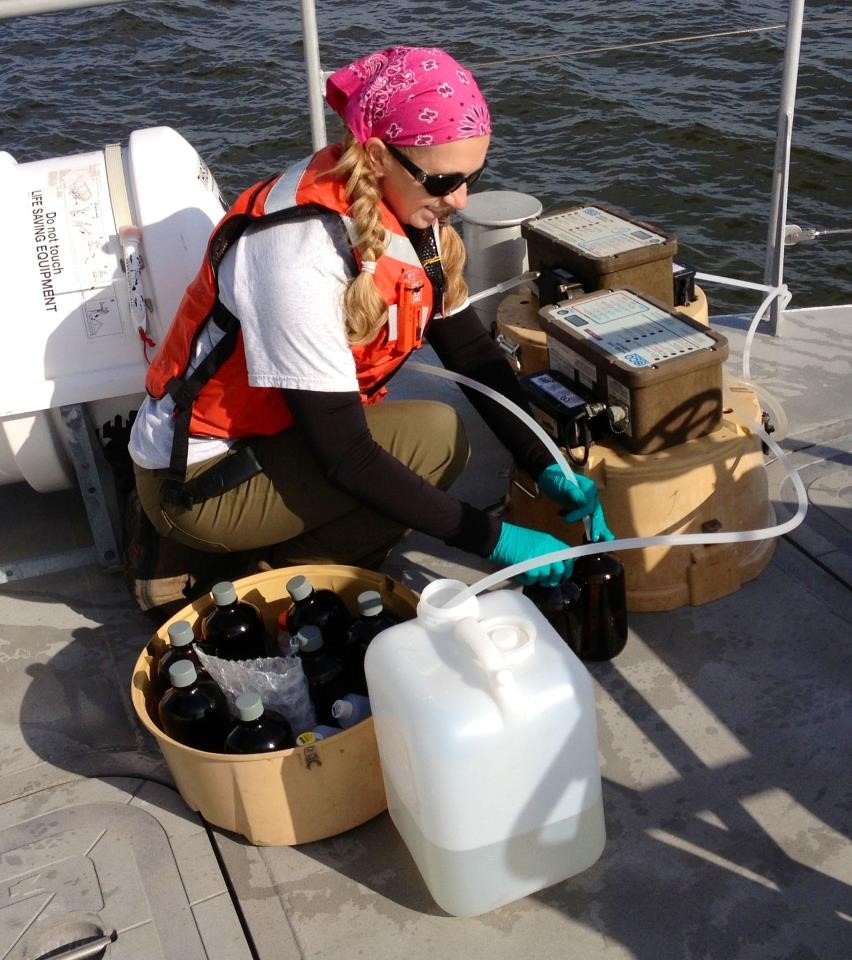
She is now a scientist specializing in marine geology and hydrodynamic processes working for EA Engineering, Science and Technology, Inc. EA has offices from Guam to Maryland and Morgan is leading many of their field efforts. Her professional duties include such a diverse array of studies such as sediment testing, ocean permitting, marine bathymetric surveys, aquatic site characterizations, interpreting ecotoxicological and bioaccumulation/tissue testing and analysis. Morgan is currently working on a site characterization study in Duluth, MN in the St. Louis River/Lake Superior area, but she has been in most of the Great Lakes in the past two summers on EPA projects. She routinely pilots the boat for bathymetric work or coring all over in the Chesapeake Bay, Gulf of Mexico and greater NYC area.
Kelly Lombardo (PhD, 2011)
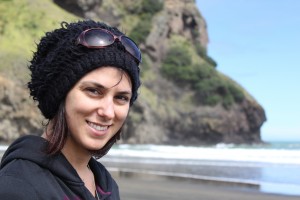 Kelly Lombardo, received her Ph.D. in 2011 from SoMAS working with Professor Brian Colle and is now an Assistant Professor at the University of Connecticut. At her current position, the job responsibilities that she enjoys most are teaching, developing new courses, and collaborating with her interdisciplinary department While a Ph.D. student at Stony Brook, Kelly studied the influence of the offshore marine atmospheric boundary layer on severe coastal storms and the processes that degrade or promote the survival of squall lines moving from coastal or inland regions to offshore regions. According to Kelly, SoMAS exposed her to “a wide range of course material, including atmospheric radiation, numerical modeling, synoptic and mesoscale meteorology, atmospheric dynamics, and physical oceanography.” She identifies one of the more essential tools she learned as a student “was the ability to multitask, a skill I use everyday as a professor.” Kelly would like to see every student as SoMAS “take advantage of every opportunity available even if it doesn’t immediately apply to your current research or career path. There is a good chance that the experiences and knowledge you gain will help you in future endeavors you haven’t anticipated.”
Kelly Lombardo, received her Ph.D. in 2011 from SoMAS working with Professor Brian Colle and is now an Assistant Professor at the University of Connecticut. At her current position, the job responsibilities that she enjoys most are teaching, developing new courses, and collaborating with her interdisciplinary department While a Ph.D. student at Stony Brook, Kelly studied the influence of the offshore marine atmospheric boundary layer on severe coastal storms and the processes that degrade or promote the survival of squall lines moving from coastal or inland regions to offshore regions. According to Kelly, SoMAS exposed her to “a wide range of course material, including atmospheric radiation, numerical modeling, synoptic and mesoscale meteorology, atmospheric dynamics, and physical oceanography.” She identifies one of the more essential tools she learned as a student “was the ability to multitask, a skill I use everyday as a professor.” Kelly would like to see every student as SoMAS “take advantage of every opportunity available even if it doesn’t immediately apply to your current research or career path. There is a good chance that the experiences and knowledge you gain will help you in future endeavors you haven’t anticipated.”
Hazel Wodehouse (MA, 2011)
Graduates from the Marine Conservation and Policy Program are prepared for a variety of careers, including jobs in the government, non-profit, and private sectors. One recent MCP graduate, Hazel Wodehouse, is training the next generation of ocean scientists at Suffolk Community College on Long Island.
Since graduating from the MCP program, Wodehouse has been teaching courses such as Environmental Issues and Introduction to Oceanography as an adjunct professor. Wodehouse finds that after taking her courses, her students have a deeper connection with the environment and the marine habitats that surround them. She described a particular experience about a year ago when she took students to see a whale necropsy.
“I took all of my classes to see the whale that day,” recalled Wodehouse. “One of my students told me later that seeing the whale was the highlight of their educational career.”
Wodehouse attributes the MCP program for helping her being successful in her career. Courses required by the program in communicating science were among her favorite, and got her interested in teaching. The one-year program allowed her to get a quality education in a short amount of time. What is her advice to the current class?
“Take advantage of as many opportunities as you can. Even if you don’t initially think you’ll be interested in something, you might surprise yourself,” says Wodehouse.
Kestrel Perez (PhD, 2011)
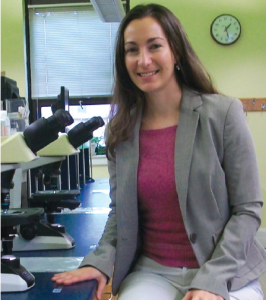 KESTREL PEREZ graduated in 2011 with her PhD in marine and atmospheric sciences. Under the advisement of Professor Stephan Munch, Kestrel’s dissertation examined the evolution of size in fish and evaluated the strength of natural selection and the presence of prolonged trade-offs from an early period of fast growth to better understand the evolution of size. She joined the School of Marine and Atmospheric Sciences in 2005 as a scholar in the Alliance for Graduate Education and the Professoriate, and is a recipient of the Dr. W. Burghardt Turner Fellowship. Upon completing her PhD, Kestrel went on to a postdoctoral position at the University of Texas at Austin in the Department of Marine Sciences.
KESTREL PEREZ graduated in 2011 with her PhD in marine and atmospheric sciences. Under the advisement of Professor Stephan Munch, Kestrel’s dissertation examined the evolution of size in fish and evaluated the strength of natural selection and the presence of prolonged trade-offs from an early period of fast growth to better understand the evolution of size. She joined the School of Marine and Atmospheric Sciences in 2005 as a scholar in the Alliance for Graduate Education and the Professoriate, and is a recipient of the Dr. W. Burghardt Turner Fellowship. Upon completing her PhD, Kestrel went on to a postdoctoral position at the University of Texas at Austin in the Department of Marine Sciences.
Kestrel is an assistant professor of biology at St. Joseph’s College in Brooklyn, N.Y., where she is teaching courses in marine biology and evolution and ecology, and mentoring undergrad researchers. Her research centers on marine biology. Specifically, she focuses on fish and invertebrate evolutionary ecology, the study of life history traits and maternal investments, and how variation in these areas influences larval fitness and recruitment.
Katie Kennedy (BA, 2010)
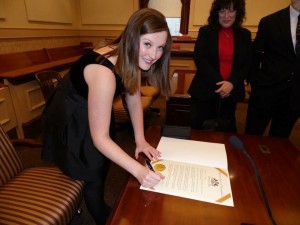 Katie Kennedy is a licensed attorney in Pennsylvania, who became Associate Director of Stewardship for Lehigh University in 2014. Prior to graduating cum laude from the Appalachian School of Law in 2013, Katie obtained her BA in SoMAS’ Environmental Studies program focusing on Marine Biology. While at Stony Brook she worked as a marine mammal trainer intern at Atlantis Marine World and conducted research in Professor Gordon Taylor’s marine microbiology lab. According to Katie “Stony Brook provided me with a truly transformative experience.”
Katie Kennedy is a licensed attorney in Pennsylvania, who became Associate Director of Stewardship for Lehigh University in 2014. Prior to graduating cum laude from the Appalachian School of Law in 2013, Katie obtained her BA in SoMAS’ Environmental Studies program focusing on Marine Biology. While at Stony Brook she worked as a marine mammal trainer intern at Atlantis Marine World and conducted research in Professor Gordon Taylor’s marine microbiology lab. According to Katie “Stony Brook provided me with a truly transformative experience.”
Katie admits that while she’s not in a traditional career associated with marine science, as an attorney, she uses many transferable skills she developed at SoMAS. “I learned to think critically. I also learned how to digest vast amounts of information and turn that information into something worthwhile. I also learned how to apply myself and rise above grand challenges. SoMAS taught me that I had a lot of grit. I am an attorney who is working for an institution of higher education and I use those critical thinking skills in many other rewarding ways!”
Katie’s advice for current students in SoMAS are to meet with your professors outside of class, find a good physical space for studying, conduct research that you are passionate about and take advantage of the SoMAS advisers expertise.
Tom Di Liberto (MS, 2009)
Tom Di Liberto grew up on Long Island and has been fascinated by the weather since he was a young child. At SoMAS, Tom studied under professor Brian Colle of the Institute for Terrerstrial and Planetary Atmospheres (ITPA) and worked with the School’s Storm Surge Research Group. His thesis dealt with storm surges affecting the New York metropolitan region. After earning his Masters degree in Atmospheric Science/Meteorology in 2009, he joined the Climate Prediction Center of the National Oceanic and Atmospheric Administration (NOAA), where he works as a meteorologist forecasting the weather for Africa, Central America, Hispaniola, and Central Asia with a focus on weather hazards that could affect food security. In addition, Tom conducts research on the use of satellite-derived rainfall estimates in these regions. His research group’s studies took on a whole new level of importance during the past year due to Super Storm Sandy. In 2013, Tom won the “America’s Science Idol” competition.
The “America’s Science Idol” competition was sponsored by the National Science Foundation’s Office of Legislative and Public Affairs, Discover Magazine,Popular Science and the Point of Inquiry Podcast. Patterned a bit after “American Idol”, the fun and engaging workshop was designed to help scientists and engineers communicate with non-technical colleagues and audiences. In winning, Tom brought home some nice loot, viz.: 1-year subscriptions to Discover and Popular Science; a live guest appearance on the Point of Inquiry podcast and the Discover DVD, as well as a variety of opportunities to visit and link with science communication groups around the country.
Helen Cheng (BS, 2009)
 Helen Cheng was the first recipient of the Stony Brook Mote Marine Laboratory Internship. She graduated with a B.S. in Biology and a minor in Marine Sciences in 2009. She is now at the Science and Resilience Institute at Jamaica Bay (SRIJB). A recent spotlight highlighted her background
Helen Cheng was the first recipient of the Stony Brook Mote Marine Laboratory Internship. She graduated with a B.S. in Biology and a minor in Marine Sciences in 2009. She is now at the Science and Resilience Institute at Jamaica Bay (SRIJB). A recent spotlight highlighted her background
From Spotlight on Helen Cheng at the Science and Resilience Institute at Jamaica Bay
The Science and Resilience Institute at Jamaica Bay (SRIJB) and New York Sea Grant are happy to announce the arrival of Helen Cheng as the Specialist for the New York Sea Grant’s Jamaica Bay Coastal Resilience. Helen will be designing outreach programs to support community engagement and research efforts to enhance resilience for the communities within the Jamaica Bay Watershed.
“Urban areas are getting more attention, especially since the devastation caused by Superstorm Sandy,” Cheng said. “Resilience is a priority across the national network of Sea Grant programs, and Jamaica Bay is internationally important setting for the issue.”
Cheng comes to SRJIB from a yearlong stint as a John D. Knauss 2015 Marine Policy Fellow at the National Oceanic and Atmospheric Administration (NOAA) Sea Grant, a highly competitive fellowship program among the nation’s highest qualified graduate students. She was the Coastal Communities Specialist working in the National Sea Grant Office in Silver Spring, Maryland, where she synthesized Sea Grant Network research and extension activities surrounding coastal community sustainable development, hazard resilience, and climate change adaptation. She was on the NOAA Coastal Hazards Resilience Workshop Planning and Support team, and assessed institutional and network research portfolios from the 33 programs of the Sea Grant Network to help identify priorities of the National Sea Grant College Program.
Helen was selected a Knauss Fellow from the New Hampshire Sea Grant program. At the University of New Hampshire she earned her M.S. in Zoology with her research on horseshoe crabs. In New England, she also worked with lobsters and scallops, was a UNH teaching assistant, and a naturalist at the nearby Seacoast Science Center. Helen earned her B.S. in Biology from Stony Brook University in 2009 where she was selected for the first-ever Stony Brook Mote Marine Laboratory internship.
David Novak (PhD, 2009)
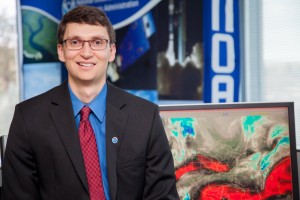 David Novak is the Director of the National Weather Service’s Weather Prediction Center in College Park, Maryland where he oversees national forecasts for heavy rainfall, snowfall, and hazardous weather. He received a PhD from SoMAS where his research involved numerical models to understand hazardous weather conditions and predict their occurrence.
David Novak is the Director of the National Weather Service’s Weather Prediction Center in College Park, Maryland where he oversees national forecasts for heavy rainfall, snowfall, and hazardous weather. He received a PhD from SoMAS where his research involved numerical models to understand hazardous weather conditions and predict their occurrence.
David’s interest in weather has been life-long. “Growing up in the extremes of Minnesota, I’ve been fascinated with the weather, and in particular, snowstorms.” His dissertation work was an extension of this passion, where he studied localized heavy snowfall events, also known as mesoscale snowbands.
According to David, while at SoMAS he “learned to consider alternative viewpoints. Marine scientists, climate scientists, and meteorologists may think differently, but sharing those diverse views leads to a better solution. Appreciating and leveraging the diversity of viewpoints is critical to my job today.”
David was pushed to “think even bigger, work even harder, and achieve even more” at SOMAS. His advice for students is to seize opportunities that take us out the our comfort zones and expand our thinking.
David has developed a fulfilling career that combines his interests in hazardous weather, his passion for helping others and applies the technical skills he developed at Stony Brook University. “I love being at the heart of the nation’s weather forecasting service and science. Whether it be an accurate forecast of a hurricane, winter storm, flood, or heat wave, I know the information we provide every day really does matter to people’s lives. I love being at the center of these advances, and in a position to influence the direction of our service, while at the same time learning from the best talent in the nation.”
Carolyn Hall (MS, 2009)
From “For Carolyn Hall ’09, Mixing Science and the Arts is a Thrilling Dance” on Stony Brook News by Elliot Olshansky on April 15, 2019
Early on in her training as a dancer, Carolyn Hall ’09 had to learn to be able to pivot quickly.
Who knew it would have such valuable application as a life skill?
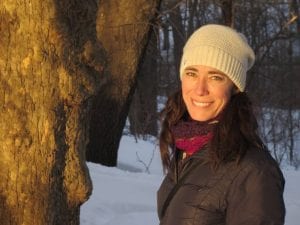
Carolyn Hall ’09 leads workshops for the Alan Alda Center for Communicating Science at Stony Brook University, part of a varied career in marine ecology and contemporary dance. (Photo Credit: Kelly AuCoin)
Hall, who holds an MS in Marine Science from Stony Brook University’s School of Marine and Atmospheric Sciences (SoMAS), conducts her own historical marine ecology research, has been part of a team studying the ecosystem of the Gulf of Maine under Adrian Jordaan of the University of Massachusetts, works as the research assistant and fact-checker to New York Times best-selling author Paul Greenberg, and leads workshops for the Alan Alda Center for Communicating Science at Stony Brook. As if that weren’t enough, she continues to perform as a contemporary dancer, having recently completed a residency on Governors Island with Works on Water and performed in a New York Times-featured piece by choreographer Carrie Ahern. A winner of the New York Dance and Performance “Bessie” Award for performance in 2002, she also serves on the boards of the Interdisciplinary Laboratory for Art Nature and Dance (iLAND) and Culture Push.
Hall recently took a few moments to breathe at her home in Brooklyn – where she lives with her husband, actor Kelly AuCoin (best known as “Dollar” Bill Stearn on Billions and Pastor Tim on The Americans) – and discuss her multifaceted career.
The best place to start is probably your work with the Alda Center. Tell us a bit about the kinds of programs you run and what you’re doing.
This is my fourth year teaching at the Alda Center, and officially, I’m a message design or “Distilling Your Message” instructor. I work with graduate students, post-graduates, and some professors, taking them through a five-week course where they work on talking about their science and their research in a way that’s for audiences who aren’t academic, and aren’t in their specialized field. It’s really fun, actually. We work on one-minute pitches or talks, conversations, storytelling, get them in front of a camera to be interviewed by journalists, and we do writing exercises, too. It’s pretty intense, but it’s only once a week. I also work with the Alda Center and go on the road to various organizations and institutions – other academic institutions, or NASA and other government institutions – and work with professionals and faculty members and undergraduates and graduates, and we do the same thing, but we team teach with acting improvisation instructors as well.
And because the Alda MethodTM is based on Alan Alda’s experience as an actor and as host of Scientific American Frontiers, does it help that you approach this with an arts background of your own?
That’s certainly what drew me to it. I thought, “I have both halves!” I wasn’t trained in acting improvisation, but in dance improvisation; I’ve done a lot, and still do. So yes, I think having a performance background made me interested in communicating my research differently. I wanted to be able to talk to the random people who came up while I was in the field, asking what I was doing. I wanted to be able to explain it to them. I wanted that audience to have access to what I was doing, because I was excited about it. It felt very connected to being a dancer, being a performer, and wanting your audience to come along with you. Even though dance doesn’t necessarily use verbal language, there’s a desire to have the audience physically or tangibly follow you and have some sort of interpretation of it that you’ve helped communicate to them.
Obviously, you had already been here for your graduate degree, but what was your path from graduating and doing the research that you’ve been working on to coming back here to work with the Alda Center?
Christine O’Connell was one of the designing founders who worked with Alan for the Alda Center. We were colleagues at SoMAS and friends already, and she was going through the initial sessions with Alan when he was testing out the improv and “Distilling the Message” exercises in tandem. For years, she was saying, “You should do this, you should do this, you should do this. You’re a scientist and a dancer, a scientist and an artist.” I finally found myself with a window of time where I said, “I could go explore and train in this.” As soon as I did, it felt like something I had to do.
You mentioned the difference between improvising as a dancer and as an actor. Your husband is something of an “in-house consultant,” so to speak, when it comes to acting. Are there things you work on where you find you want an actor’s perspective and you consult Kelly?
Kelly does know the kind of acting exercises we use – he’s done them at one point or another – but honestly, I consult the improv instructors who are part of the Alda Center, because they know how we’re applying it to working with scientists and working in communication beyond acting.
Although, Kelly finds it all really fascinating, and I do use him as a sounding board when I’m trying to get some of my scientific concepts out to a more general audience. I try things out on him and he’ll say, “Ah, I don’t know if I quite understand that.”
Working in the Alda Center, and being married to a prominent actor yourself, have you ever had the opportunity to bring them together?
Because I only work with the Alda Center part-time, I haven’t had that many interactions with Alan, but I did bring Kelly to a mixer in New York City, and I got to introduce them. There were a lot of people around, but they had a nice warm, brief chat about acting. Alan is one of those spectacular actors that Kelly has watched and admired since he was a child – so meeting him was meeting one of those icons of the acting world. It was really fun for them to meet, and I was just standing there beaming at the fact that this was happening, because Kelly was really excited to meet him, and Alan was very warm. He’s a very nice and approachable person, and they definitely connected over acting and the theatre world.
At the Alda Center, you bring your arts background into science, but you also have this other component to your career, where you bring your science background into the arts. That seems like a very different process. How does it work?
It’s different with each organization and each project. I think that the artist brain and the science brain work very similarly. There’s experimentation, there’s failure, and there are many trials. There’s an innate curiosity in your own practice or research, and also in the world around you, whether it’s a specific microscopic world, or a world of movement, or a world of sculpture, or whatever the art may be. The practices of being a scientist and being an artist are not so dissimilar, and what’s interesting is that when approaching a scientific topic from an artist’s point of view, there’s a different way of questioning, a way of representing the topic that, to me, is rather freeing: “What does it feel like?” That gives a different lens of looking at the science. So, you might start digging into deeper details of the science from an angle you didn’t expect, which is fascinating.
You talked a little bit about the process that brought you to the Alda Center. Can you tell us a bit more about the journey that led you to this amazingly varied career?
I grew up in Los Angeles, and although I wasn’t right on the coast, I loved going to the beach and I loved tide pools. So, I’d say that tide pools were my first fascination having to do with marine life and the marine environment, but I didn’t think I was going to pursue that at a young age. When I went to Oberlin College as an undergraduate, I was more interested in human physiology. I was already a dancer, and ran track, and they fit very nicely hand in hand, and so my degree was in biology with a focus on human physiology. Then, because it’s easier to pursue a career in dance when you’re young than when you’re older, I did work in physical therapy for a number of years, but I was becoming a professional dancer, in LA first, and then in New York.
After ten years of that, I was missing digging into the science side of my brain, and I spoke to professors at UC Santa Cruz, because their marine biology program was in my mind from high school as the place to go. One of them said, “You know, there’s a really good marine science program in New York.” I said, “Really?” They said, “Yeah, at Stony Brook.” I had not heard of it, but that’s because on the East Coast, I wasn’t exploring that as a real option.
I went out to Stony Brook and took a couple of upper-level undergraduate marine science courses at SoMAS, and I loved them both for very different reasons, and I thought, “this is what I’m going to do.” However, I still felt like I needed a little more exposure, so I did an internship at the Southwest Fisheries Science Center in La Jolla. That was the first place where I thought, “This is what being in the field is. This is what being among the public doing marine research is. This is what a full-time commitment to research that’s on computers, that’s on equipment, that’s talking to your colleagues, in the field, on a boat, is about,” and I was hooked, no pun intended. When I applied for grad school and hoped to get in, I wrote about that internship experience, and realized that sort of public interaction with research was fascinating to me.
I thought I would stop dancing, and for the first semester of graduate school, I couldn’t dance, because it was so intense, and I’d been out of school for so long that my learning curve was super-steep. But then, the dancing side of my brain still needed to be attended to, so I do both.
Having been here as a grad student, gone out to do your research, and then come back to work with the Alda Center, are there things you appreciate about Stony Brook now that you didn’t necessarily see as a student?
I think what’s most impactful about teaching a course that sees scientific researchers from many departments at Stony Brook is realizing what a deep community of scientists and research and study there is at Stony Brook. Sometimes, there are misconceptions about state schools and what they can offer in terms of excellence in various departments. Some schools are known for business, or known for chemistry, but I feel like at Stony Brook, not only is there this incredible medical school – which I think we are known for – but the rigorous pursuit of all the different sciences that I see reflected in the graduate students and the postdocs, is really impressive, and I feel lucky that I get to talk to such a really great cross-section of them through this scientific communication class.
Obviously, there’s something that you bring to these students when you work with them in these communication classes. How much do you find yourself taking back with you in terms of learning about their research?
That’s the beauty of having the Alda Center at Stony Brook. Because I am working with these scientists, these engineers, these medical students, who are gaining expertise in these fields – and they’re learning how to talk about it – they have to break down what their research is. They are so skilled at saying what their work is academically. I don’t understand all the words or all the processes, but because I get to work with them on understanding it, so that someone like me, who’s not in their field can understand it, I actually can walk away with an understanding: “Wow, you’re really working on trying to understand why people with schizophrenia often hear voices. Where’s that coming from? If we can figure out where it’s coming from in the brain, then maybe we can find a way to reduce it or help control it better.” I can walk away with an understanding of what cutting-edge research these students and their labs and their professors are working on, and that’s exciting.
You talk about the two sides of your brain that need attention, the science side and the dance side. What would you say to current students who may have their own seemingly divergent passions about how you manage to serve both, indulge both, and use both in your career?
There are so many multidisciplinary folks out there now, or hybrids, and I think more and more collaborations between scientists and people in other disciplines are happening. I encourage students to entertain their hybrid interests, partly because it makes them relatable to more audiences, but I also think that it’s important to remember that as a scientist you have all these different sides of you that are equally rich.
How do you have a career that way? That’s a tricky thing. If you’re going to try to do what I do, I’m freelance everything, but I have other friends who are full-time researchers and they create theatre pieces, solo shows, that aren’t about science…or maybe they are, but not necessarily. It is possible. You just have to figure out what your main goal is, what you want from each discipline. I think that’s the key. That’s the question to ask yourself, but it is possible.
Katherine Rojowsky (BS, 2008)
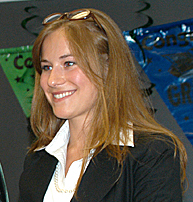 Did you check the weather report today? Then you probably know Katherine Rojowsky’s work. Katherine, an Atmospheric and Oceanic Sciences major, credits “amazing internships” with helping her mature as a meteorologist.
Did you check the weather report today? Then you probably know Katherine Rojowsky’s work. Katherine, an Atmospheric and Oceanic Sciences major, credits “amazing internships” with helping her mature as a meteorologist.Jae Lee (PhD, 2008)
 Jae Lee received both her PhD and MS from SoMAS, graduating in 2008. For her master’s thesis, Jae looked at radiative transfer modeling with Professor Bob Cess to estimate the earth’s radiation balance. Her PhD conducted under the direction of Professor Sultan Hameed focused on how the sun can influence Earth’s climate.
Jae Lee received both her PhD and MS from SoMAS, graduating in 2008. For her master’s thesis, Jae looked at radiative transfer modeling with Professor Bob Cess to estimate the earth’s radiation balance. Her PhD conducted under the direction of Professor Sultan Hameed focused on how the sun can influence Earth’s climate.
Jae recalls “Stony Brook offered her a very good education. I learned everything I should know for my job at Stony Brook.”
Jae is currently a research scientist at the University of Maryland, Baltimore County, working at the NASA Goddard Space Flight Center. She is working on satellite mission for solar irradiance measurements and analyzing satellite data to determine solar variability and its impact on Earth’s climate. She is also “interested in arctic environment changes related with recent Greenland Ice Sheet losses.”
Jae’s advice to SoMAS students is to “Work and work, enjoy, be yourself; opportunities will come.”
Lora M. Clarke (PhD, 2007)
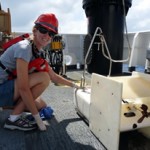 Lora Clarke received her Ph.D. from SoMAS in 2007. She also has a Bachelor of Science degree from Christopher Newport University in Virginia and a Master of Science from the University of Massachusetts. At SoMAS, she worked with former Dean David Conover on numerous fish ecology studies involving Atlantic silversides, Menidia menidia. Lora’s research concentrated on the population dynamics and connectivity of subpopulations of this species along the east coast of the United States.
Lora Clarke received her Ph.D. from SoMAS in 2007. She also has a Bachelor of Science degree from Christopher Newport University in Virginia and a Master of Science from the University of Massachusetts. At SoMAS, she worked with former Dean David Conover on numerous fish ecology studies involving Atlantic silversides, Menidia menidia. Lora’s research concentrated on the population dynamics and connectivity of subpopulations of this species along the east coast of the United States.Lynn Abramson (PhD, 2007)
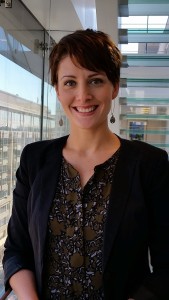 Lynn Abramson has a forged a career path that began in marine science and now influences environmental policy on a national level. She was a Ph.D student at SoMAS from 2001 to 2007 working with Bob Aller and Cindy Lee on the biological carbon pump and related biogeochemical processes. Her dissertation focused on how mineral interactions influenced the decomposition of sinking particulate organic matter, using pigments and amino acids as tracers. She recalls knowing early in her time at SoMAS, that she wanted to apply her scientific knowledge in a way that could benefit others.
Lynn Abramson has a forged a career path that began in marine science and now influences environmental policy on a national level. She was a Ph.D student at SoMAS from 2001 to 2007 working with Bob Aller and Cindy Lee on the biological carbon pump and related biogeochemical processes. Her dissertation focused on how mineral interactions influenced the decomposition of sinking particulate organic matter, using pigments and amino acids as tracers. She recalls knowing early in her time at SoMAS, that she wanted to apply her scientific knowledge in a way that could benefit others.
Upon graduation, Lynn received the prestigious John Knauss Marine Policy Fellowship sponsored by the National Oceanic and Atmospheric Administration’s Sea Grant program. Her one year fellowship morphed into more than five years of work on oceans, public lands, water resources, energy, and transportation issues when she joined the staff of U.S. Senator Barbara Boxer (D-CA). After leaving Senator Boxer’s staff Lynn joined the Clean Energy Initiative with The Pew Charitable Trusts where she coordinates their Clean Energy Business Network, that informs and engages over 3,000 clean energy business leaders. At this non-profit, non-partisan organization, she currently conducts research and works on “federal policies to promote cleaner and more efficient sources of energy.
Lynn applies her scientific understanding of complex environmental problems to practical solutions that can be implemented by businesses across the nation. According to Lynn “having a strong foundation in science has given me a much deeper, more holistic understanding of the environmental issues I’ve worked on in my policy career. My Ph.D. work trained me in objective thinking—keeping an open mind and weighing conflicting information and perspectives before making a decision.” Lynn is an excellent example of how a rigorous education in the sciences can be applied to a career in environmental policy.
Lynn has some advice for current students looking towards their future careers. “Try to learn about the diverse range of work being done by the faculty and students there. Take advantage of courses in other departments and opportunities to get involved in your broader community.” She also reminds us that “communication is key to success-in graduate school and later in your career.”
Joyce Lau (BS, 2006)

“Being in Stony Brook University gave me the opportunity to experience what it means to be a marine biologist and I am thankful I have been a part of MSRC. The Marine Sciences Research Center is full of faculty who are supportive and always willing to help. I will always remember as I was applying to graduate school, all the faculty who were willing to talk to me and give me advice even though I was never one of their students and they were not my assigned advisors. Having had a mentor like Bassem Allam has really helped me become who I am today. He was supportive, helpful, and taught me how to become a better scientist. With him as my mentor, I was able to do a URECA summer project, present a poster at the URECA poster presentation event, as well as learn numerous lab skills. As I continue my studies in marine science, I can only hope that one day I will become a professor who like Mary Scranton, is always willing to take time out to advise students, who like Bassem Allam, inspires students to pursue marine science and instills confidence in students to think for themselves, and like all the faculty at marine science, who always keep an open door and a willingness to help every student.”
Dianne Greenfield (PhD, 2002)
 “I was very happy with my decision to come to MSRC at Stony Brook for my Ph.D., and I would highly recommend MSRC to future students. One of the biggest assets of the department is its open and friendly atmosphere. Not only is it relatively easy to collaborate with other laboratories on site, but the majority of students socialize together creating a warm, welcoming environment, which is so important considering how much time one spends on campus and interacting with colleagues. Students who decide to attend MSRC are rewarded with a wonderful opportunity to develop their own research interests with excellent faculty, and, when one has spare time, students can easily drive or take the train into New York City or hang out at the many nearby beaches.”
“I was very happy with my decision to come to MSRC at Stony Brook for my Ph.D., and I would highly recommend MSRC to future students. One of the biggest assets of the department is its open and friendly atmosphere. Not only is it relatively easy to collaborate with other laboratories on site, but the majority of students socialize together creating a warm, welcoming environment, which is so important considering how much time one spends on campus and interacting with colleagues. Students who decide to attend MSRC are rewarded with a wonderful opportunity to develop their own research interests with excellent faculty, and, when one has spare time, students can easily drive or take the train into New York City or hang out at the many nearby beaches.”
Dianne Greenfield. Ph.D. 2002
Research Assistant Professor
University of South Carolina & South Carolina Dept. of Natural Resources
Anitra Ingalls (PhD, 2002)
 “I highly recommend Stony Brook and the Marine Sciences Research Center to prospective students. The faculty here are not only first-rate researchers; they sincerely care about seeing graduate students achieve their career goals in science. Students come to the MSRC from a variety of backgrounds and with a broad range of interests. This diversity is on of the MSRC’s greatest strengths. Students can pursue their interests in all areas of oceanographic research, and have the opportunity to participate in and design projects in locations ranging from the Long Island Sound to the Atlantic Ocean. Living near the water is an added plus. While some students rely on the sound as a study site, others are happy to go kayaking, swimming, sailing, and fishing there when they are not in the lab.”
“I highly recommend Stony Brook and the Marine Sciences Research Center to prospective students. The faculty here are not only first-rate researchers; they sincerely care about seeing graduate students achieve their career goals in science. Students come to the MSRC from a variety of backgrounds and with a broad range of interests. This diversity is on of the MSRC’s greatest strengths. Students can pursue their interests in all areas of oceanographic research, and have the opportunity to participate in and design projects in locations ranging from the Long Island Sound to the Atlantic Ocean. Living near the water is an added plus. While some students rely on the sound as a study site, others are happy to go kayaking, swimming, sailing, and fishing there when they are not in the lab.”
Anitra Ingalls, Ph.D. 2002
Assistant Professor,
University of Washington
Tom Hurst (PhD, 2000)
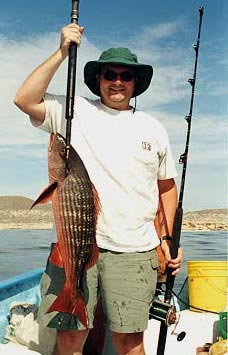 “When I came to the MSRC to study the population biology of fishes, I was impressed by the breadth of topics addressed by the faculty. However, I couldn’t predict how valuable this diversity of interests would become to me. During the course of my research on the winter ecology of striped bass, I have frequently called upon the expertise of geologists, benthic ecologists, and physical oceanographers in planning experiments and interpreting findings. In addition I have had the opportunity to participate in a variety of estuarine research projects outside my own work. Through this cooperation, I have gained a much better understanding of my study organism, and the estuarine environment in which it lives. Working among such a diverse group of scientists has been an incredibly challenging experience, and one which has been invaluable to my professional development.”
“When I came to the MSRC to study the population biology of fishes, I was impressed by the breadth of topics addressed by the faculty. However, I couldn’t predict how valuable this diversity of interests would become to me. During the course of my research on the winter ecology of striped bass, I have frequently called upon the expertise of geologists, benthic ecologists, and physical oceanographers in planning experiments and interpreting findings. In addition I have had the opportunity to participate in a variety of estuarine research projects outside my own work. Through this cooperation, I have gained a much better understanding of my study organism, and the estuarine environment in which it lives. Working among such a diverse group of scientists has been an incredibly challenging experience, and one which has been invaluable to my professional development.”
Tom Hurst. Ph.D. 2000
Research Scientist, National Marine Fisheries Service
Hudson Roditi (PhD, 2000)
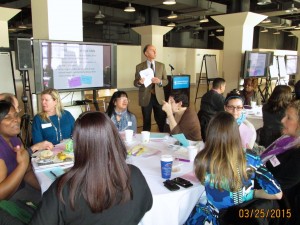 Hudson Roditi received a Ph.D from SoMAS in Coastal Oceanography in 2000, working in Nick Fisher’s lab. His thesis was titled “Rates and routes of trace element uptake in zebra mussels.” The zebra mussel is an exotic invasive freshwater species that was introduced into the Great Lakes accidentally in the mid-1980’s and has since invaded freshwaters in much of North America.
Hudson Roditi received a Ph.D from SoMAS in Coastal Oceanography in 2000, working in Nick Fisher’s lab. His thesis was titled “Rates and routes of trace element uptake in zebra mussels.” The zebra mussel is an exotic invasive freshwater species that was introduced into the Great Lakes accidentally in the mid-1980’s and has since invaded freshwaters in much of North America.
Hudson is the program director of the Urban Advantage Middle School Science Initiative at the American Museum of Natural History in NYC. He now works with over 220 schools, 640 teachers and over 60,000 students at the American Museum of Natural History, the Bronx Zoo, Brooklyn Botanic Garden, New York Aquarium, New York Botanical Garden, New York Hall of Science, Queens Botanical Garden and the Staten Island Zoo. He helps teachers learn how to shift their perceptions of science away from being memorization of facts and more towards a way of explaining the world and gaining new knowledge.
Hudson recalls, “the quality of teaching was strong at Stony Brook, and the range of oceanographic and resource management topics taught there prepared me in fields that varied from straight research to risk assessment, fisheries management, and a broad range of other topics.”
Hudson hasn’t worked in a lab since graduating from Stony Brook, but SoMAS has helped him navigate fluently through a variety of science education programs. He was the Latin American and Caribbean Regional Director for The Global Learning and Observations to Benefit the Environment (GLOBE) program, which is a worldwide science and education program funded by the National Science Foundation
According to Hudson, his success was due in part to his advisers who were “supportive of my choice to explore and find the right path for myself after SoMAS.” He encourages other students to do the same by finding their place at Stony Brook University.





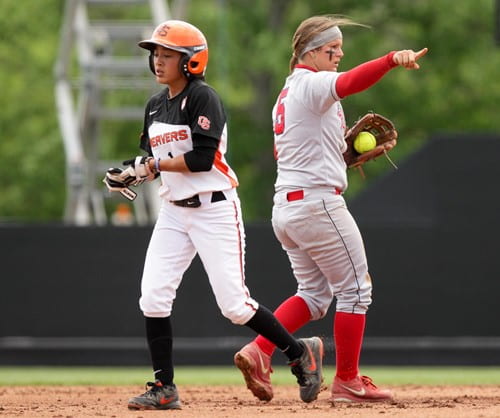
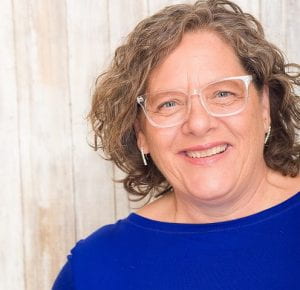
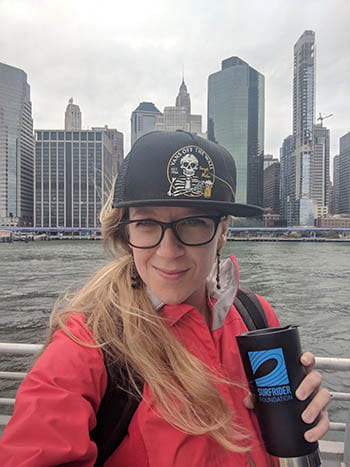
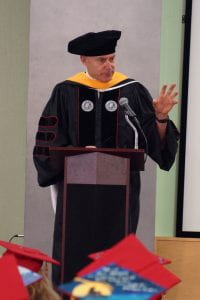
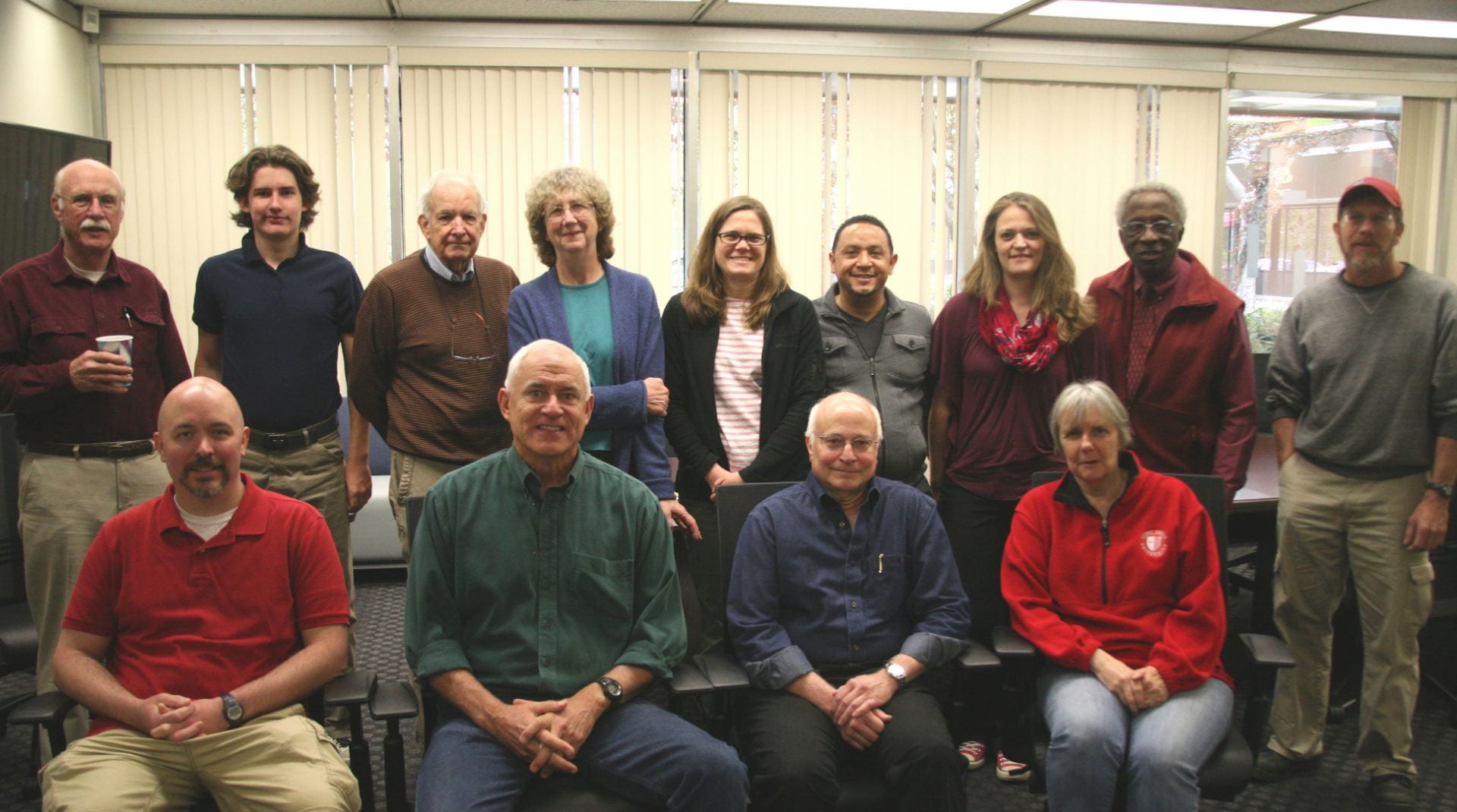
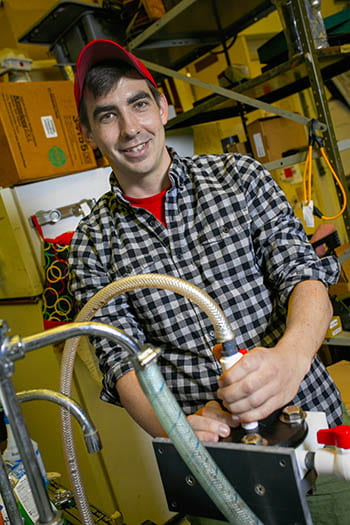
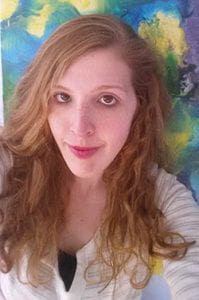
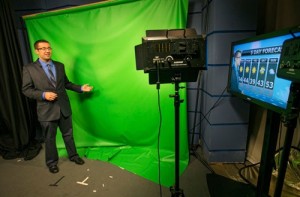
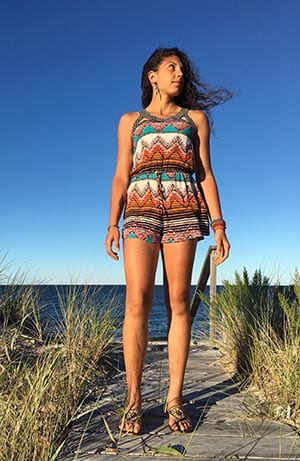
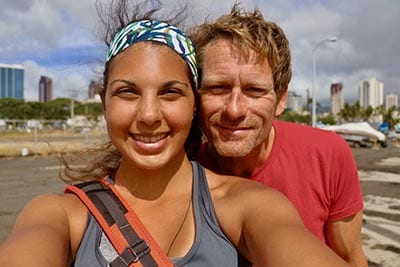
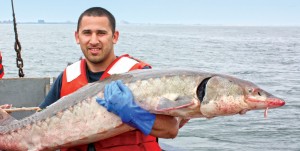
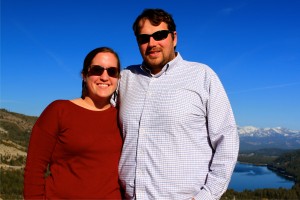
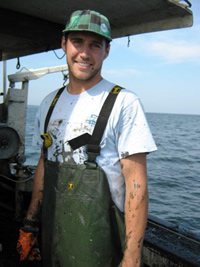
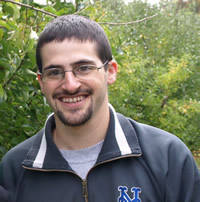
You must be logged in to post a comment.